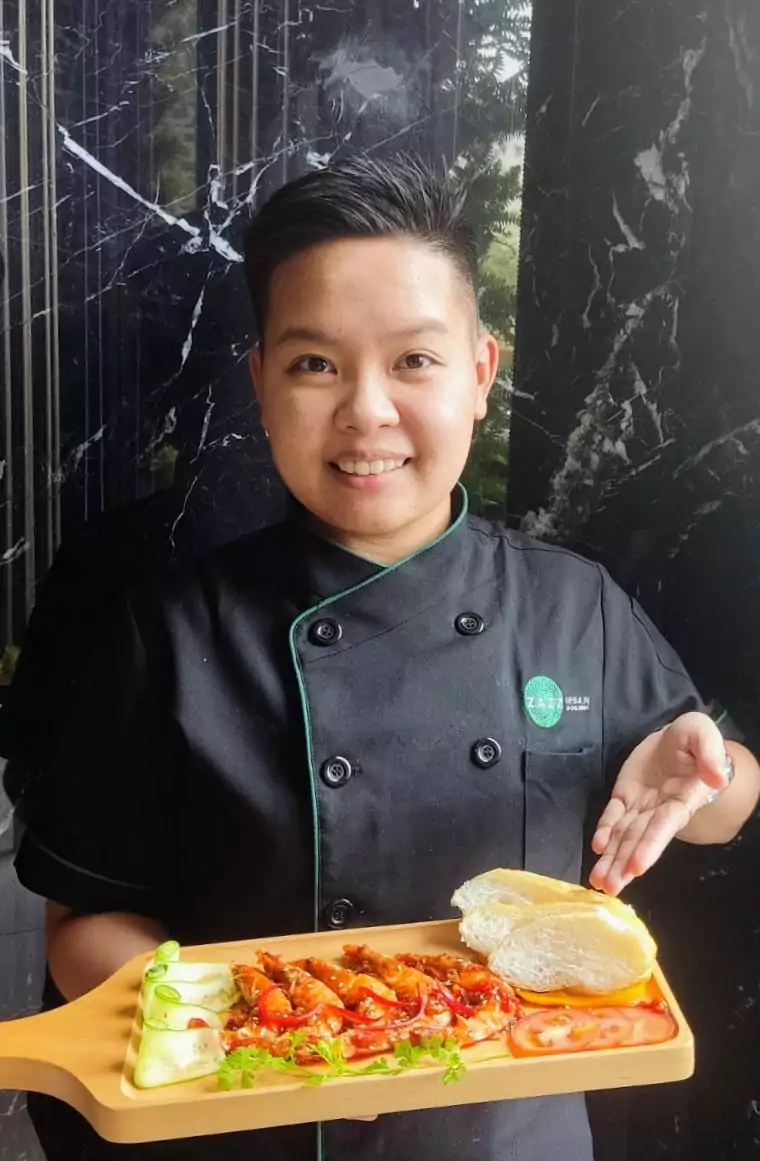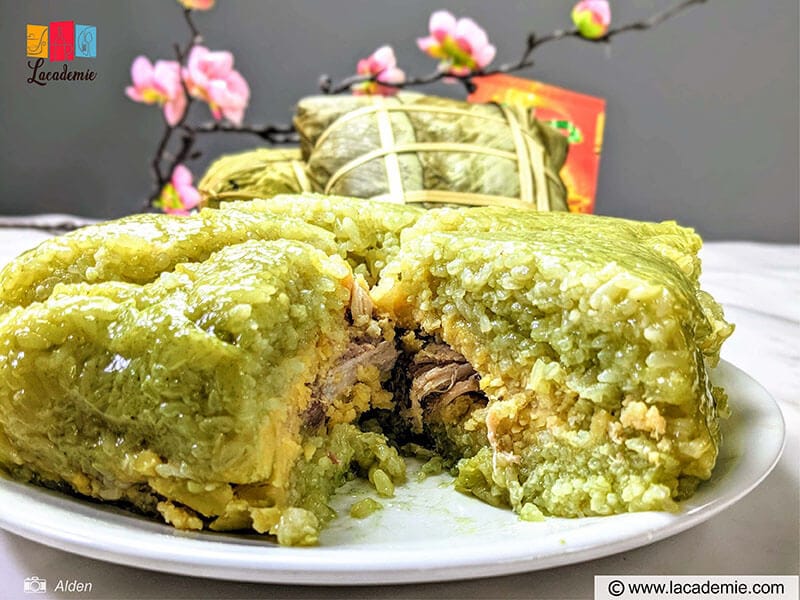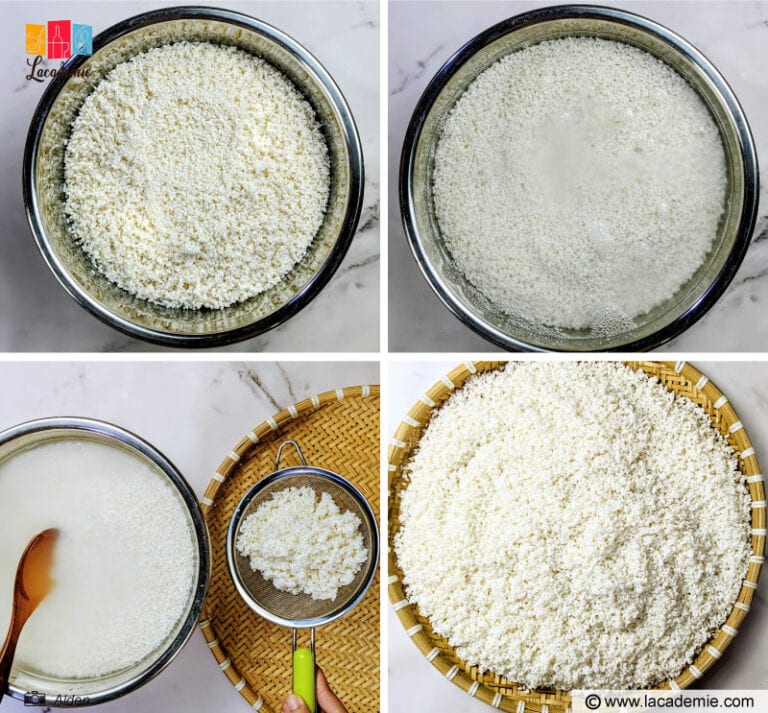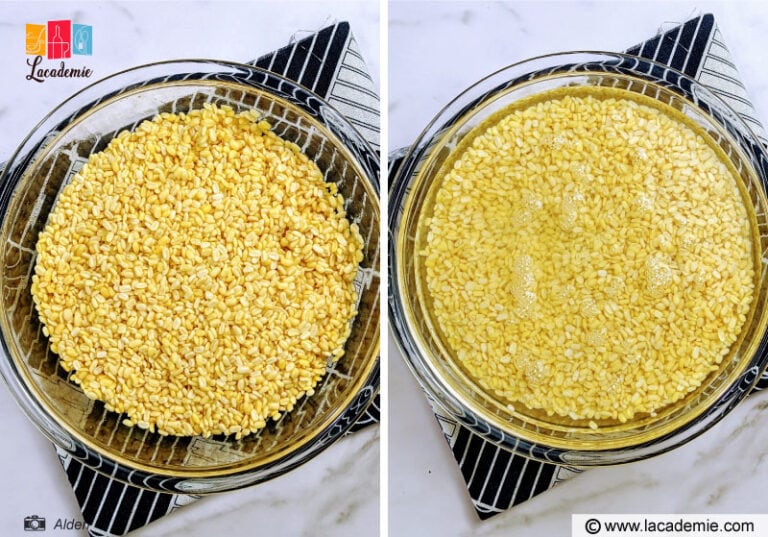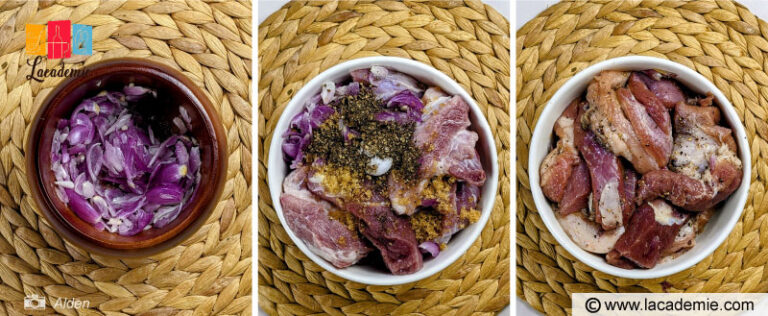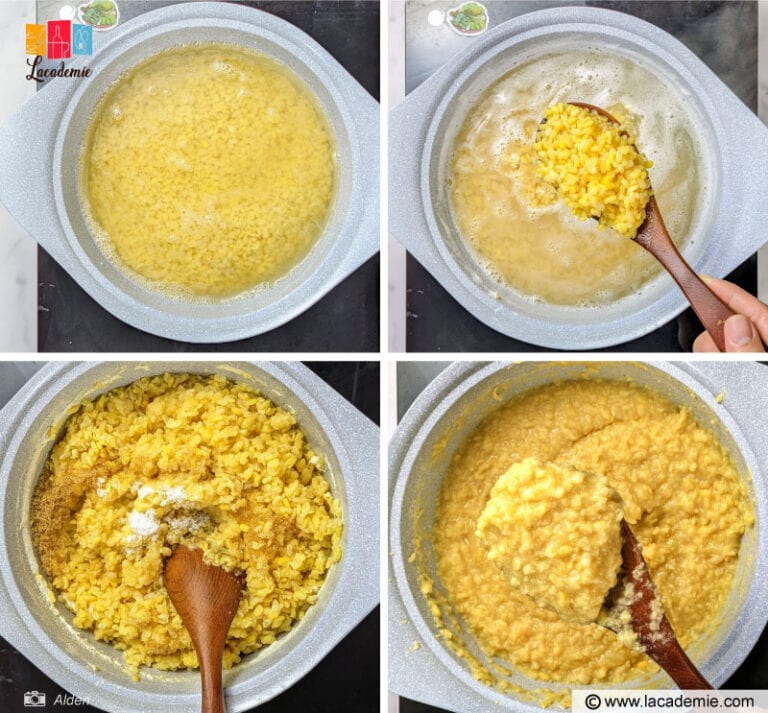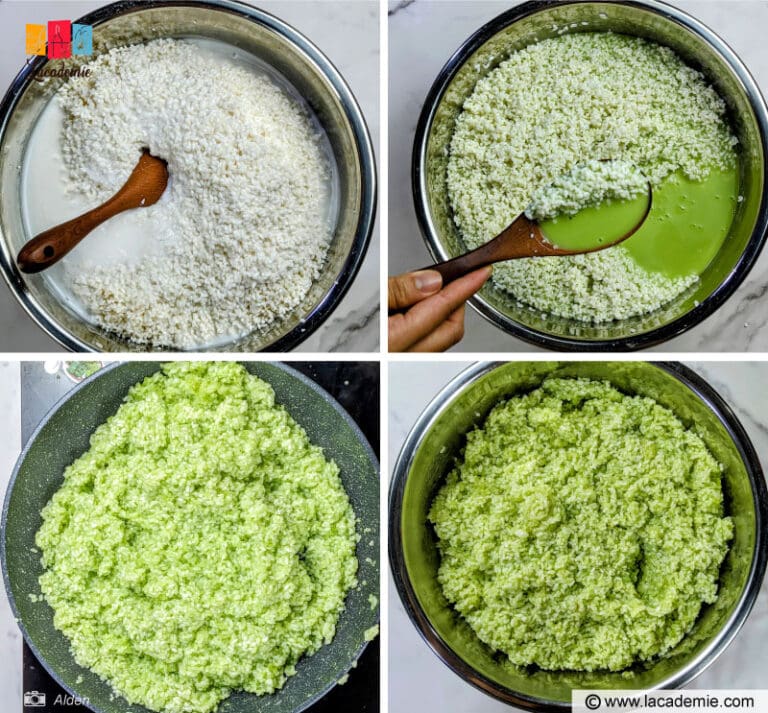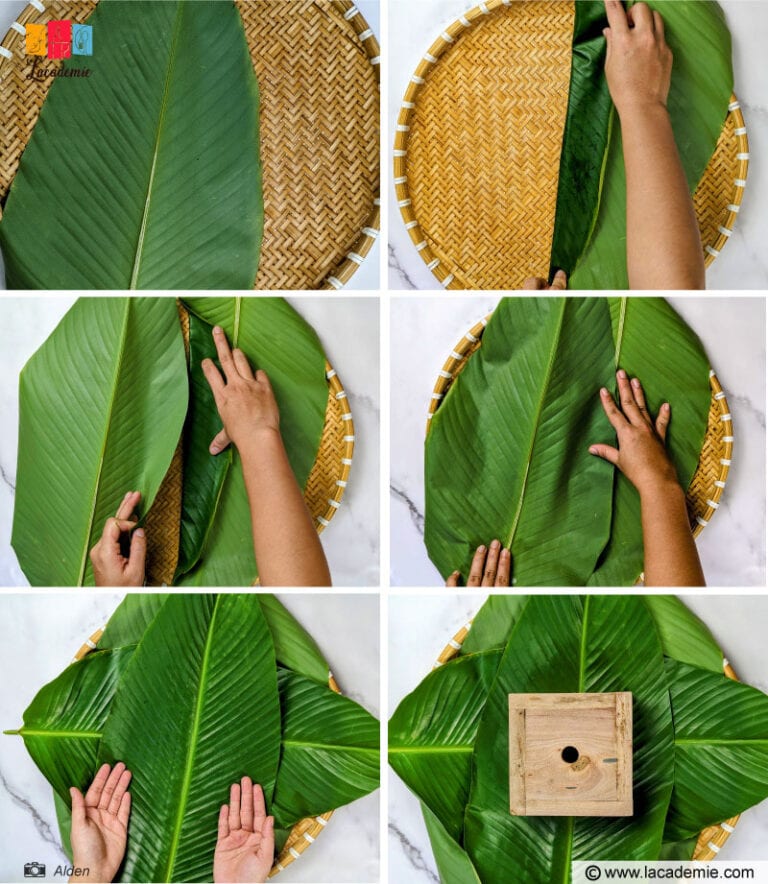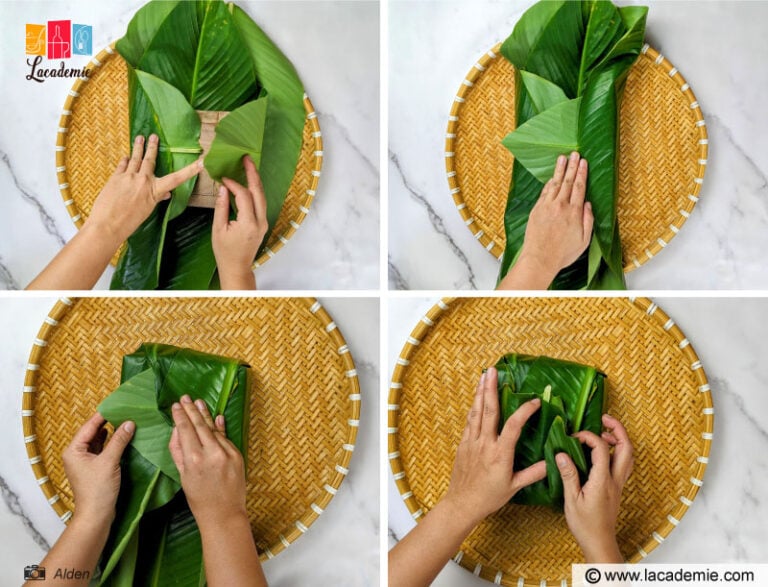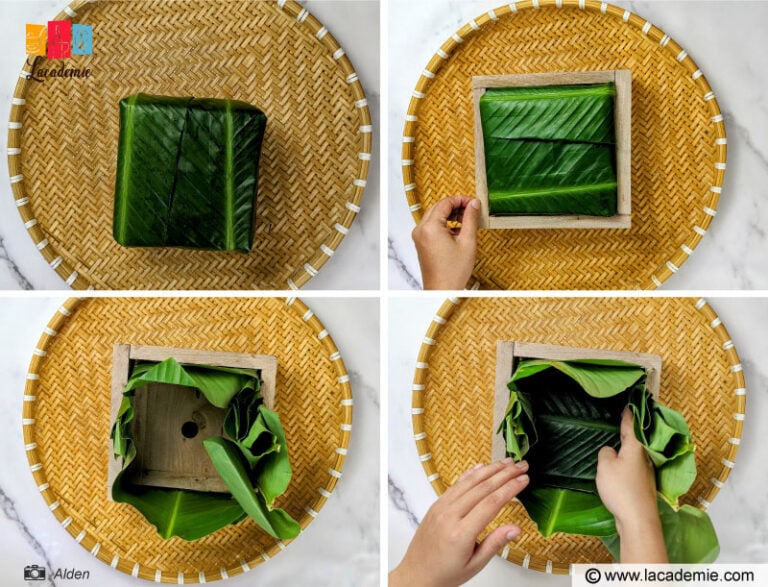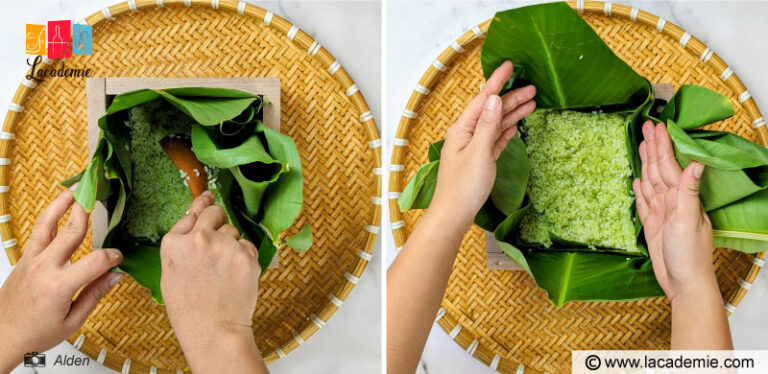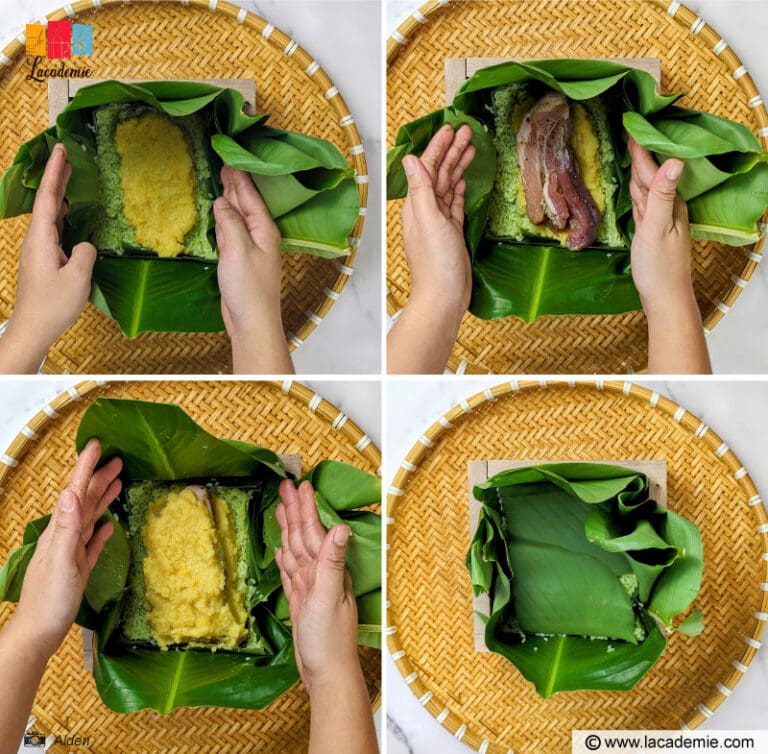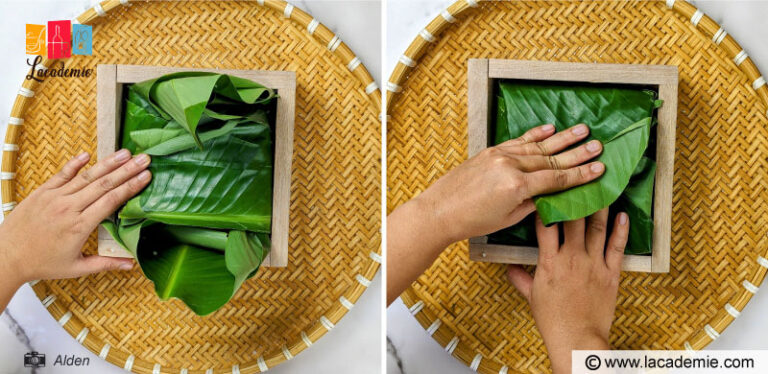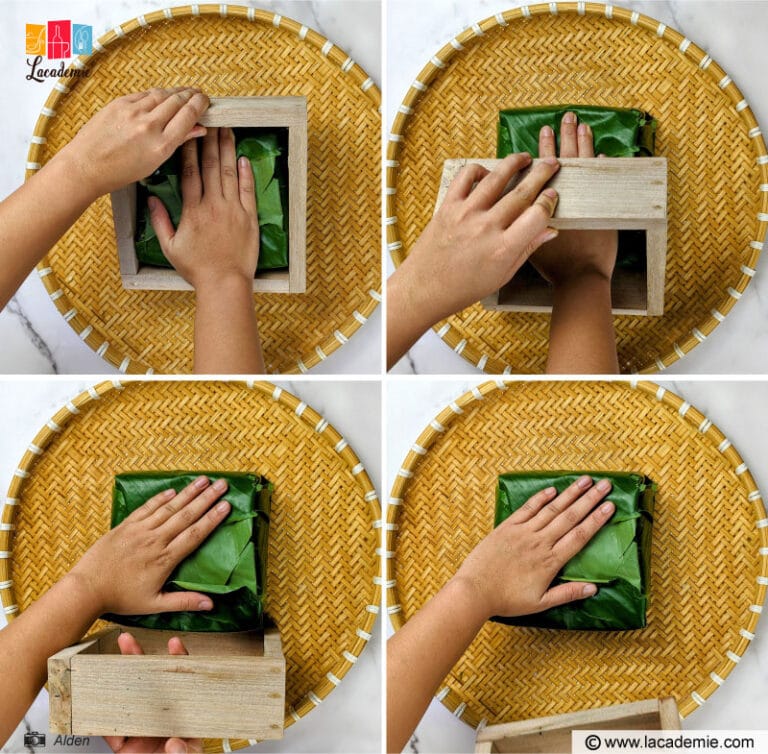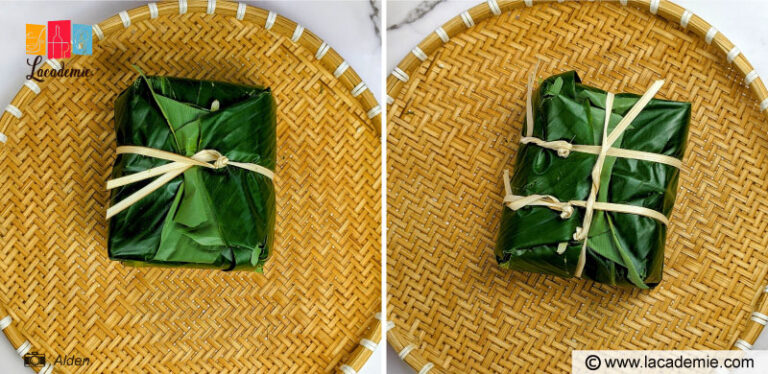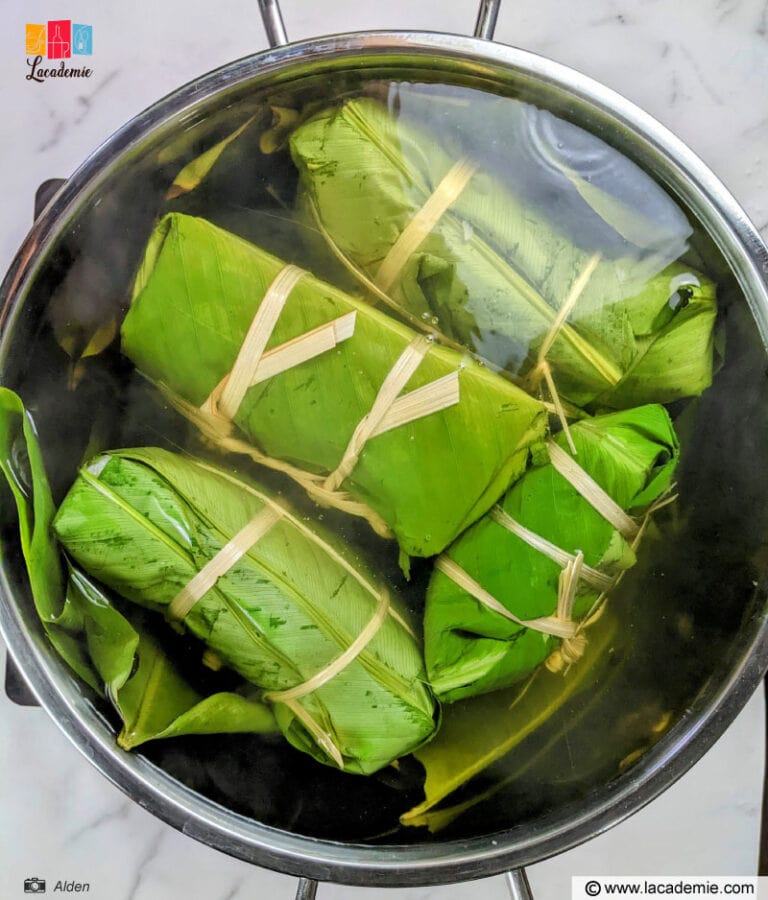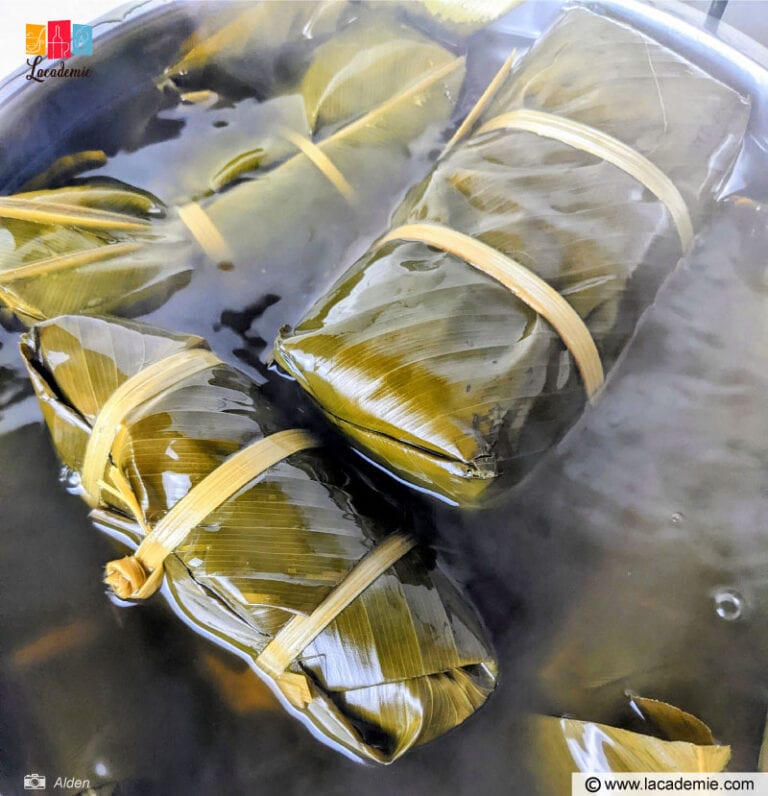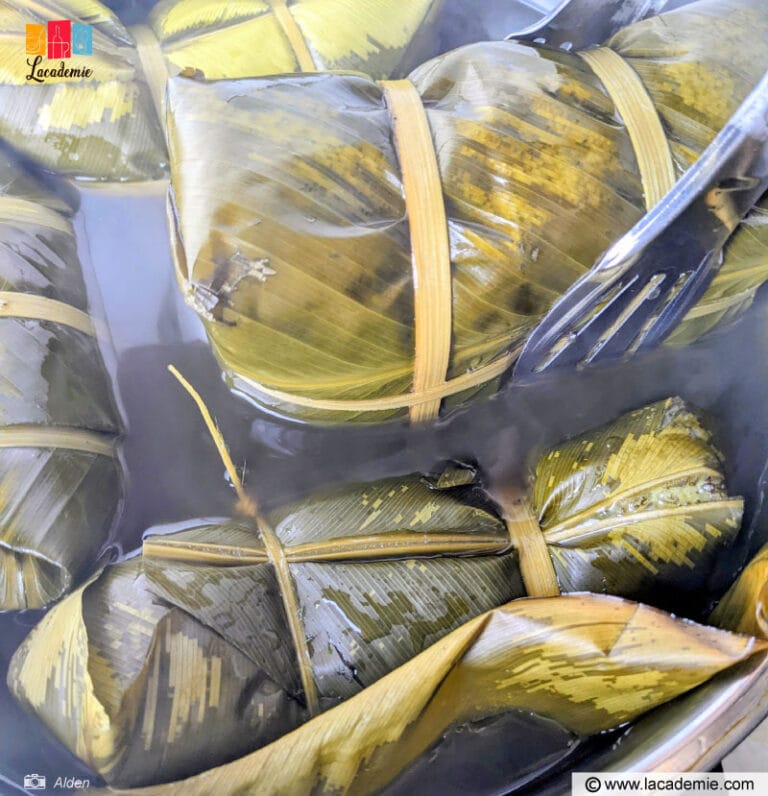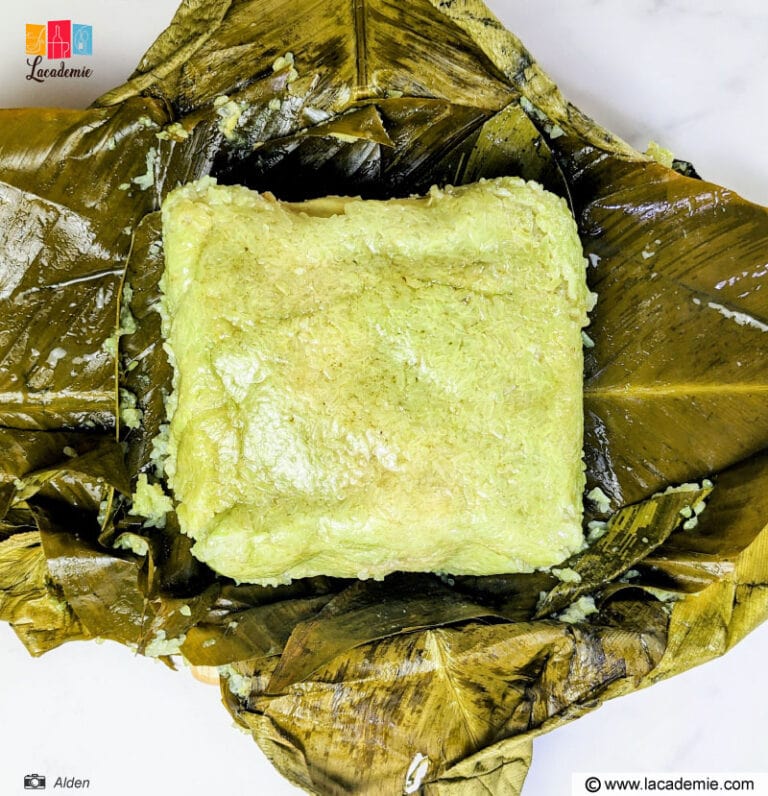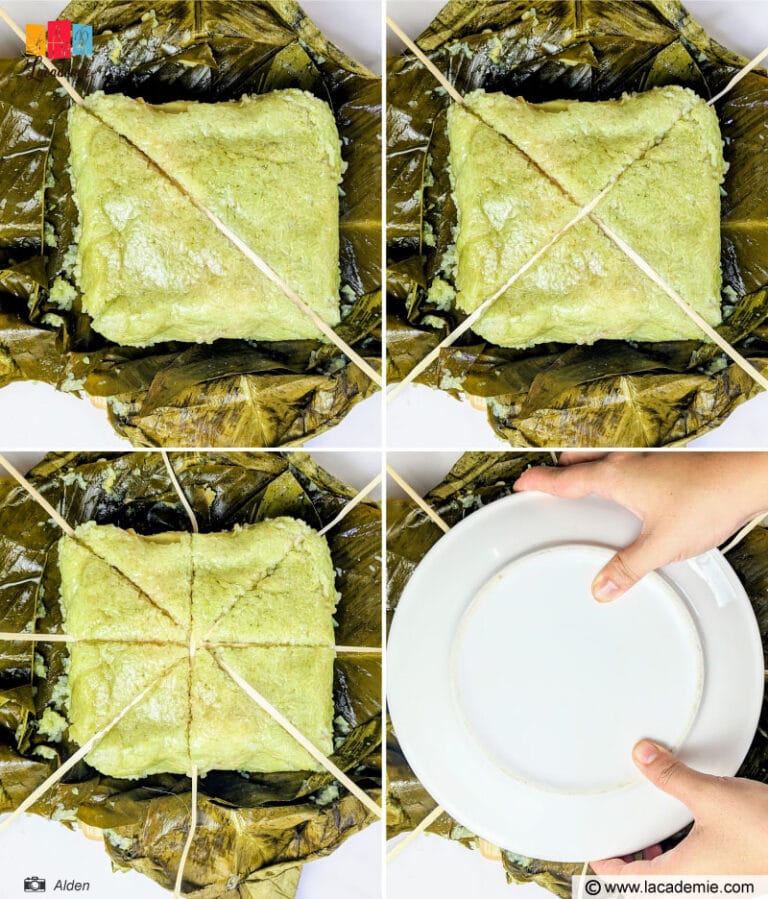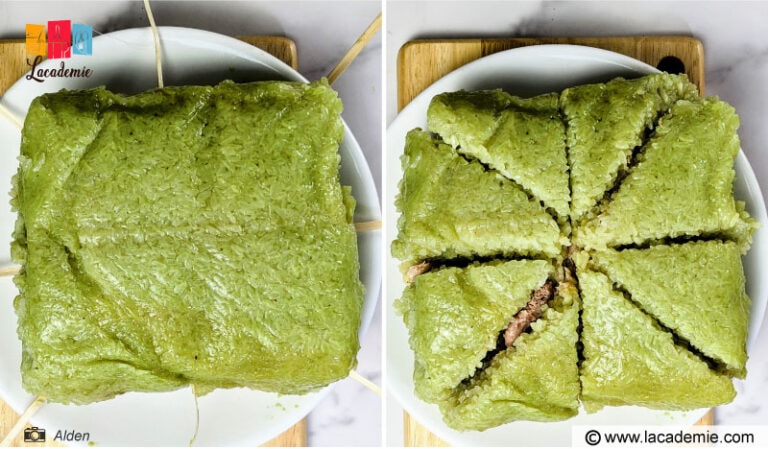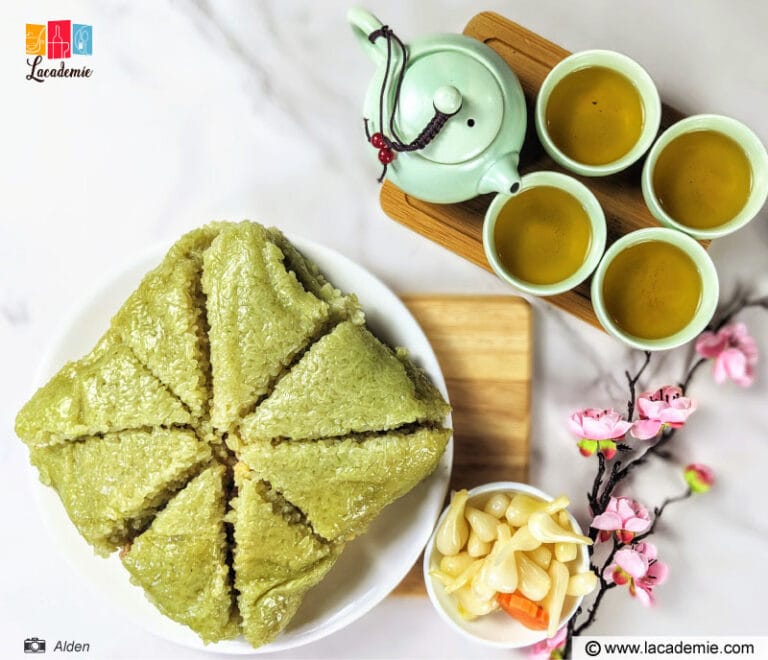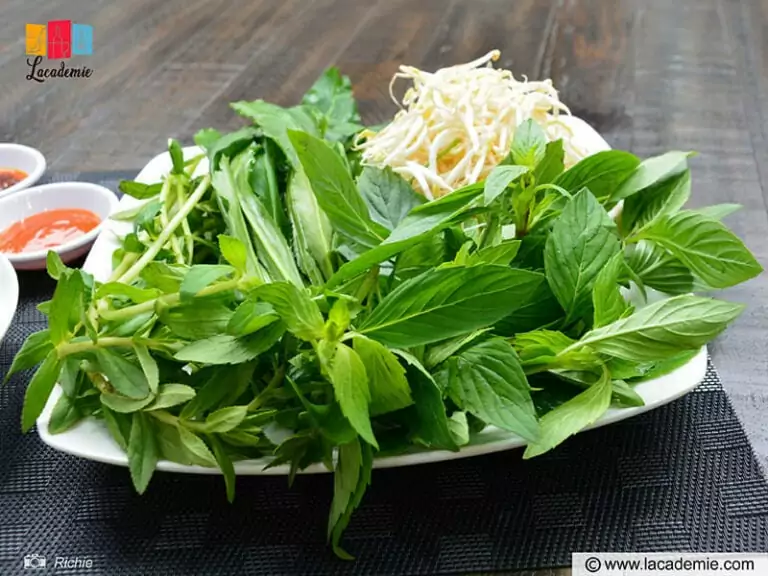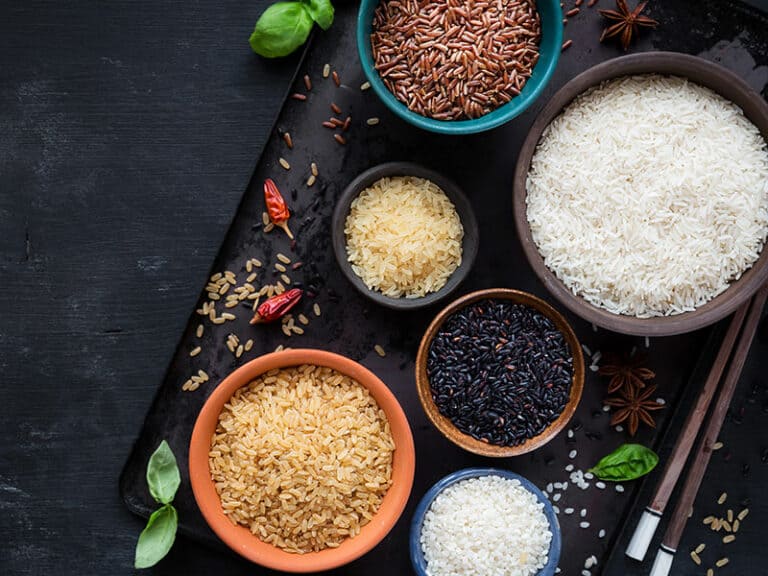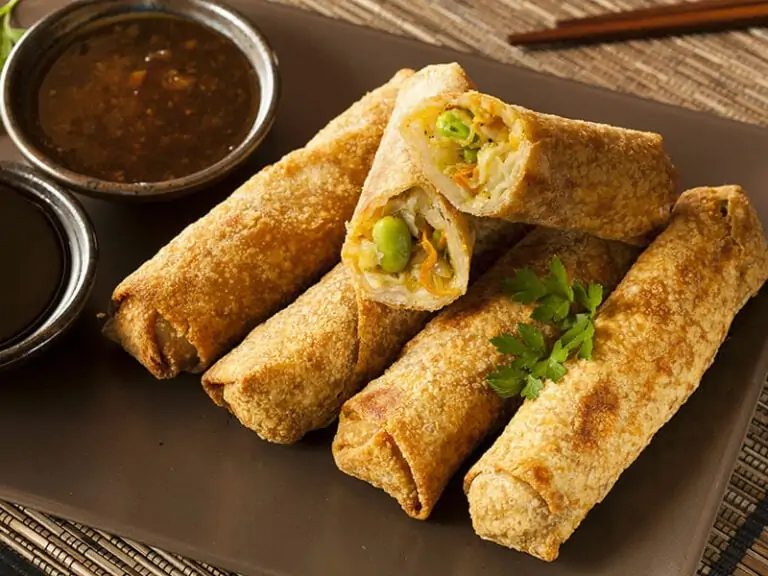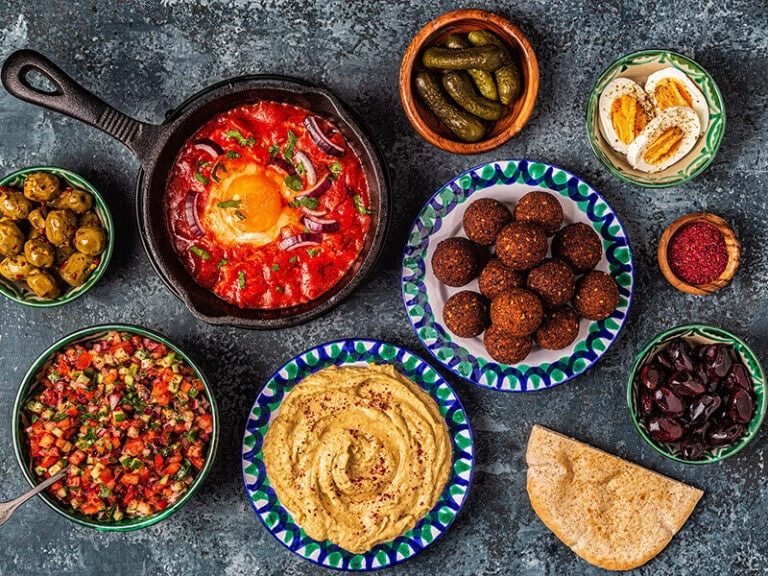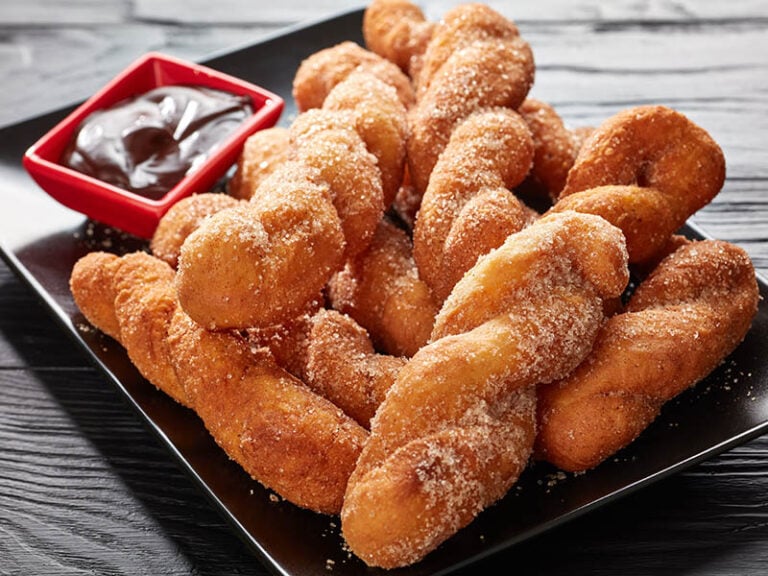Vietnamese square sticky rice cake, or “Bánh Chưng” in the Vietnamese language, is a classic treat for celebrating the Tet holiday (Lunar New Year). Ask any Viet friend you know, and I’m sure they’re familiar with this delicacy.
Not only does Banh Chung taste heavenly, but it’s also a dish with significant cultural value. For the Vietnamese, no Tet holiday would be completed without a perfectly cooked sticky rice cake.
If you want a simple yet tasty Asian treat for the New Year and learn more about the tradition of Vietnam, Banh Chung is something you have to try!
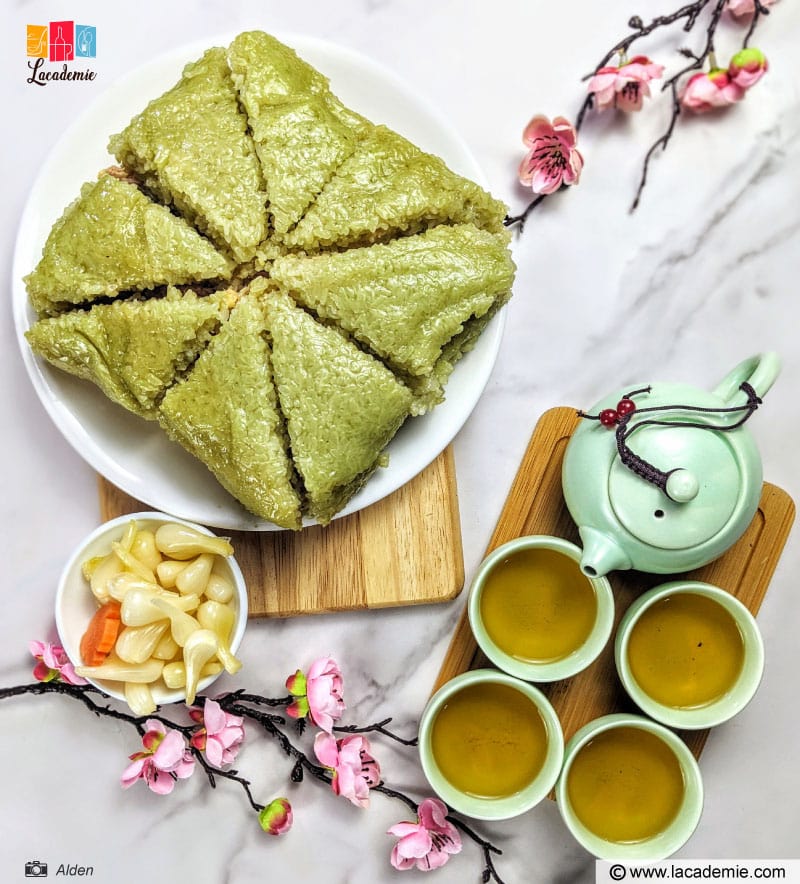
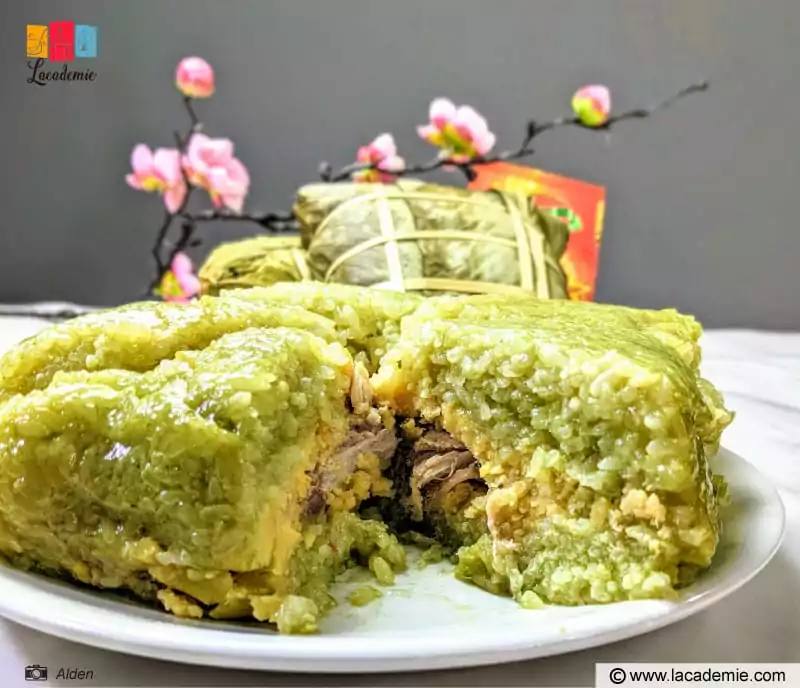
The Legendary Story Of Banh Chung
As mentioned above, Banh Chung is a traditional Vietnamese food with a long history. But did you know it has an origin story that has been told to generations of Vietnamese children?
The legend of Banh Chung took place in the Hung Dynasty (from about 1700 to 1630 BC) when the Sixth Hung King created a competition for selecting his successor. Each prince had to bring a dish to pay tribute to their ancestors and celebrate the Tet holiday.
Lang Lieu, the eighteenth son of Hung King, decided to make two delicacies from the simple ingredients he had at hand. These two dishes, which were Banh Chung (square sticky rice cake) and Banh Giay (steamed sticky rice cake), eventually won him the crown.
Since then, Banh Chung and Banh Giay have become the quintessential dishes for the Vietnamese Lunar New Year. While people in Vietnam also enjoy Banh Giay as a morning treat, Banh Chung is mainly reserved for the Tet holiday and special occasions, such as the Hung King’s Anniversary.
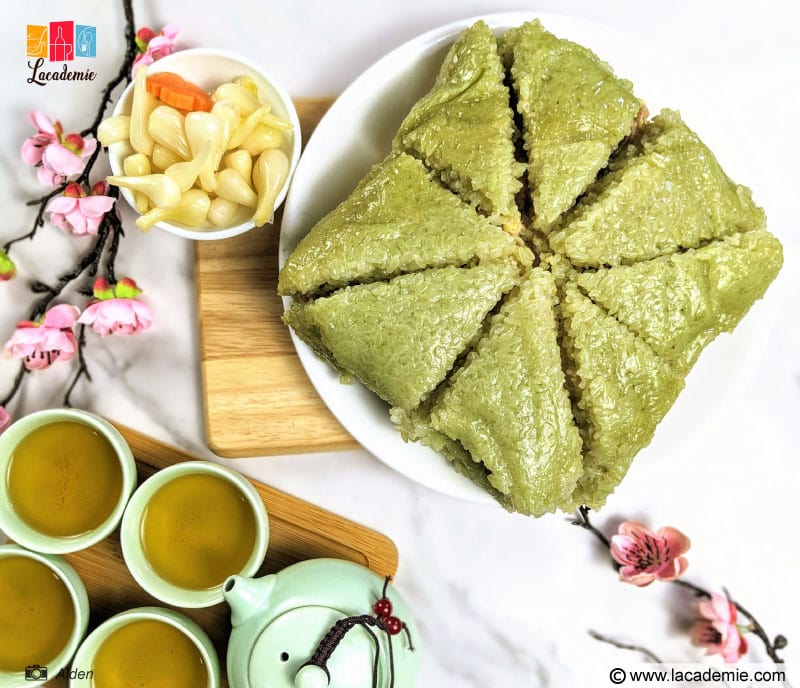
Tools
Making Banh Chung is not a complicated process. Thus the tools required are fairly basic. The only thing that you might not have are the Banh Chung molds. You can also make the cakes without using the molds, but it’ll be a bit trickier.
- Banh Chung molds: Great for creating a beautifully shaped Banh Chung. You should look for them at Asian stores.
- Large pot: For boiling the cakes.
- Tongs: For taking the sticky rice cakes from the pot after boiling.
- Big mixing bowl: For mixing the rice with the coconut milk and other spices.
- Large bowl: For marinating the pork.
- Large spoon: For stirring the ingredients in general.
- Pan: For stir-frying the sticky rice.
- Spatulas: For mixing and spreading the fillings. You can use two kinds of spatulas in this recipe, a regular one and a flat wooden turner (optional).
- Pestle and mortar: For crushing the ingredients.
- Sieve: For draining the sticky rice after soaking.
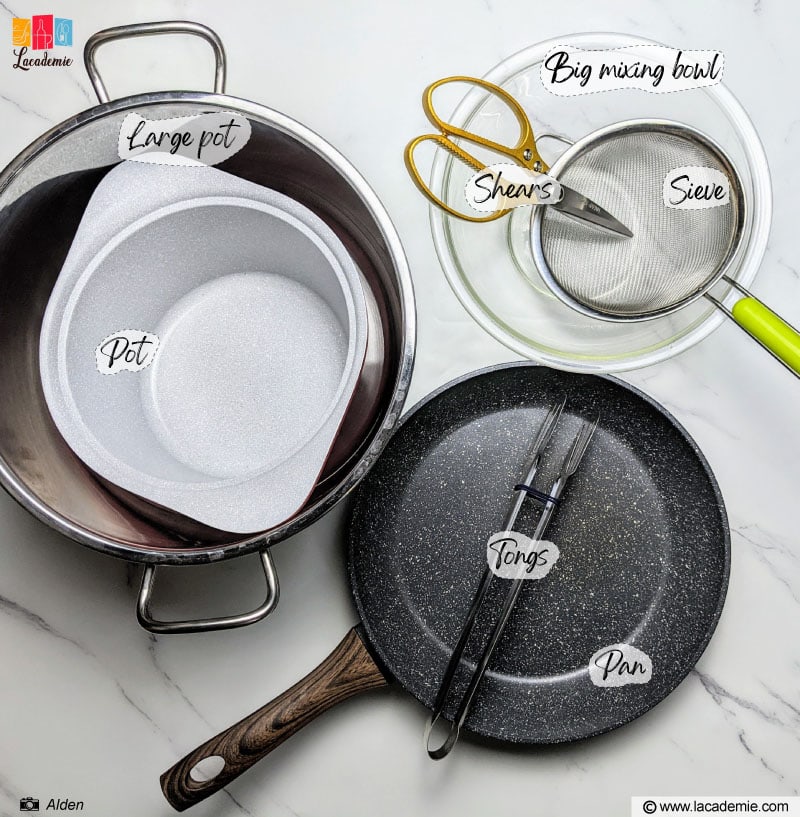
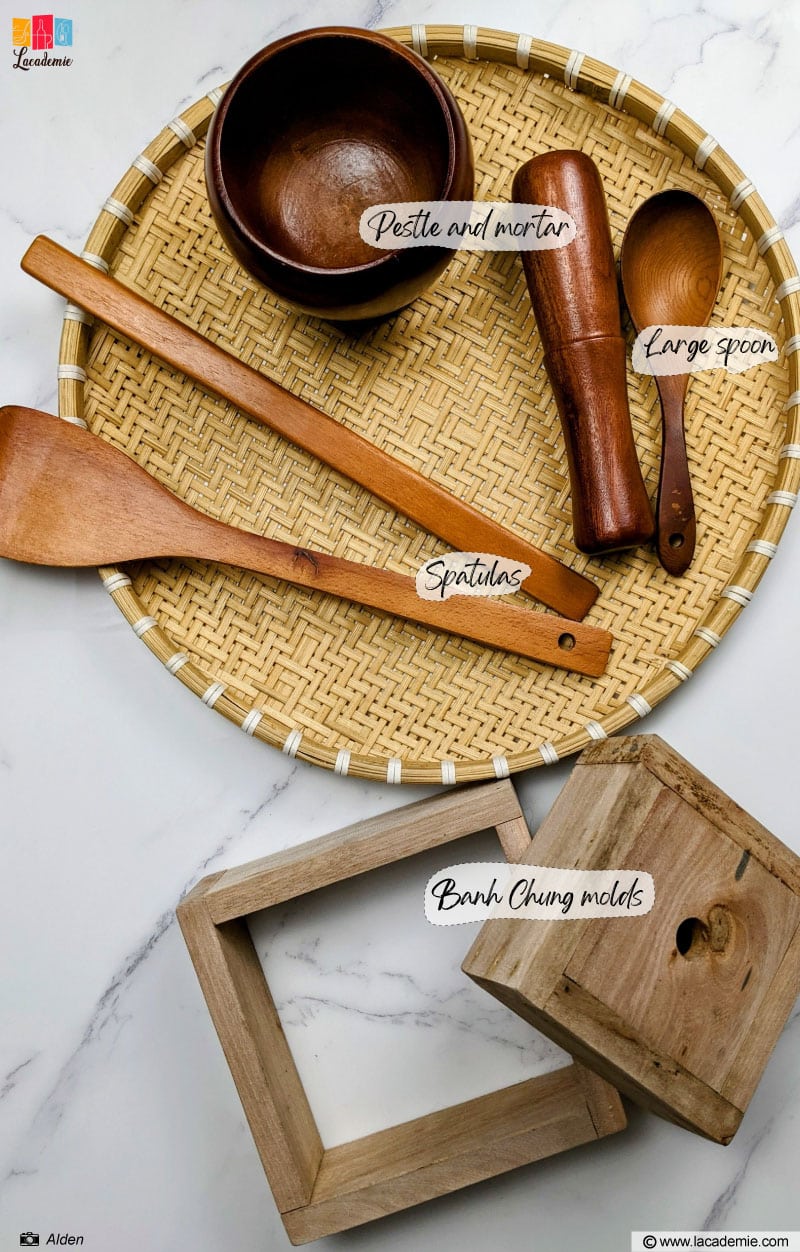
Ingredients
Sticky rice, mung beans, and pork belly are the three main ingredients that make Banh Chung what it is. You’ll also need to prepare some Dong leaves for the wrapping.
- Sticky rice: Always opt for high-quality sticky rice with a light, pleasant aroma and uniform, shiny grains.
For the Vietnamese, the most suitable type of sticky rice for making Banh Chung is called “gạo nếp Cái Hoa Vàng”. FYI, this is also a great ingredient to make Vietnamese peanut sticky rice.
- Mung beans: These buttery, mild-tasting beans go perfectly with the sticky rice to create an addicting combination.
- Pandan leaf extract: Gives the Banh Chung its iconic bright green color.
- Coconut milk: Add a touch of sweetness to the sticky rice cake.
- Pork belly: Select a cut with a fair amount of meat and fat. If your pork is too meaty, the filling might be a bit dry. Pork shoulder is also a good choice.
- Dong leaves or banana leaves: Frozen Dong leaves are often available in Asian stores around the Lunar New Year in spring. If you want to make Banh Chung at other times of the year, you can swap them for banana leaves.
- Bamboo strings or kitchen twines: While bamboo strings (the Vietnamese call them “lạt giang”) are the traditional choice for wrapping the cakes, they can be hard to find outside Vietnam. For that reason, you can go for kitchen twines instead.
- Spices: Salt, sugar, pepper, and shallots.
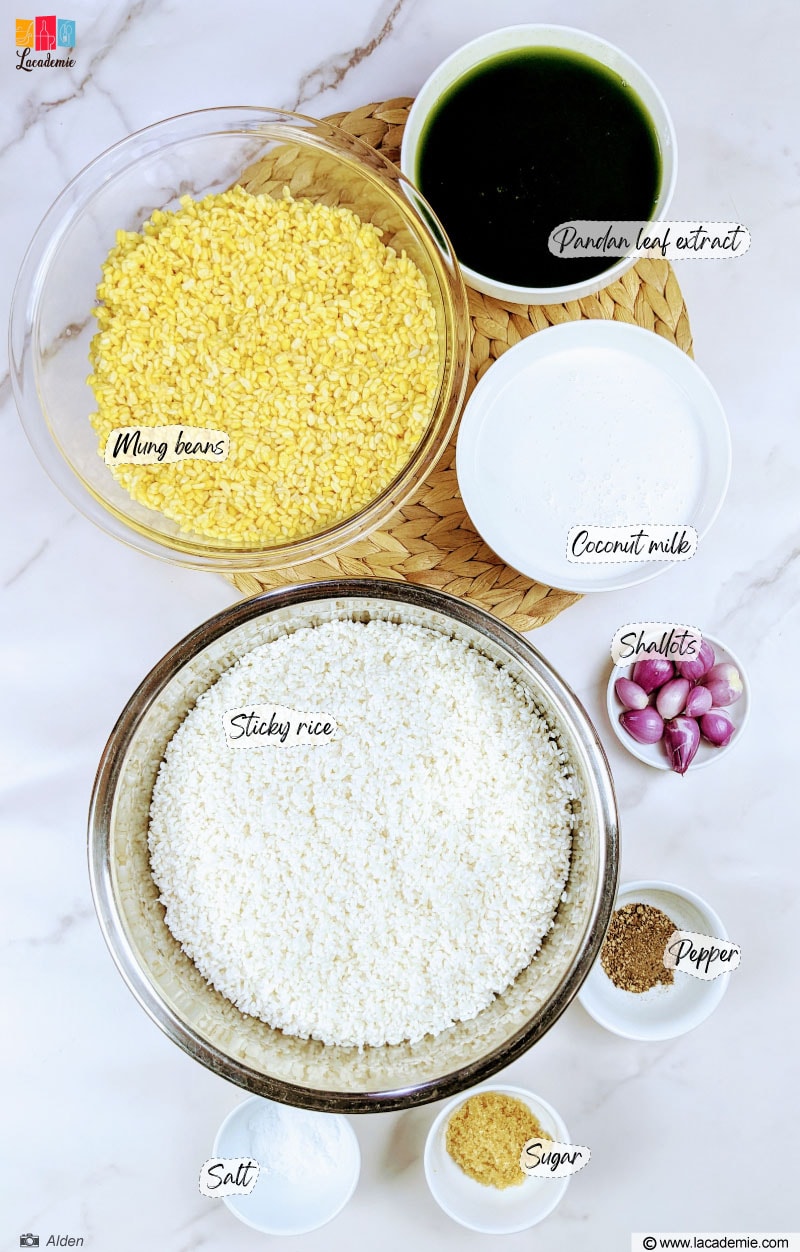

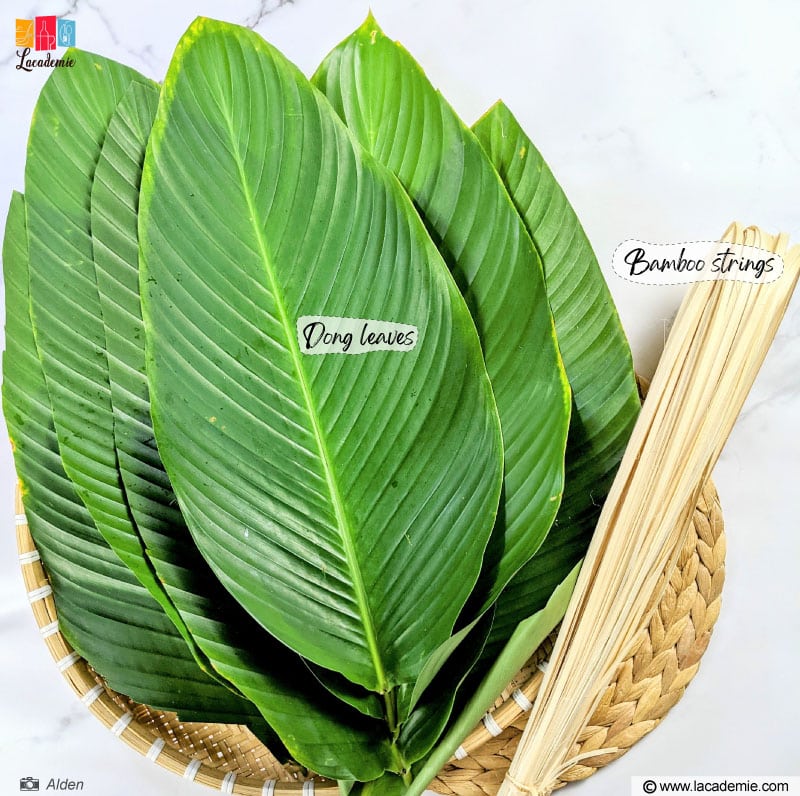
Directions
Here comes the fun part! Let’s learn how to make your yummy Banh Chung. Do note that you should pay great attention to the wrapping steps, especially if you’re cooking this dish for the first time.
Step 1: Prepare The Leaves And Bamboo Strings
Rinse both sides of the Dong leaves carefully and wipe them completely dry. The more thoroughly you wash these leaves, the better they will protect the cakes from mold.
Soak the bamboo strings in water to soften them. Skip this step if you use kitchen twines.
Step 2: Soak The Sticky Rice
Wash the sticky rice and soak it in water for 6 to 8 hours or overnight. You should let the rice sit in water for at least 4 hours.
Afterward, drain the rice using a sieve and place it on a flat winnowing basket. Let the rice dry completely.
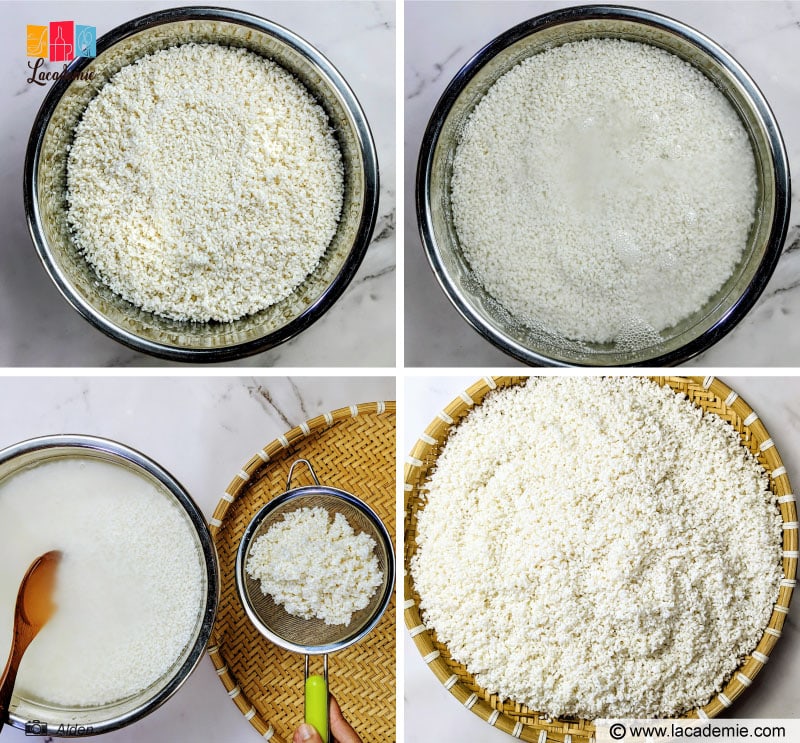
Step 3: Soak The Mung Beans
Similar to sticky rice, you should rinse and soak the mung beans for at least 4 hours or overnight if you have time. Then, drain and let them dry.
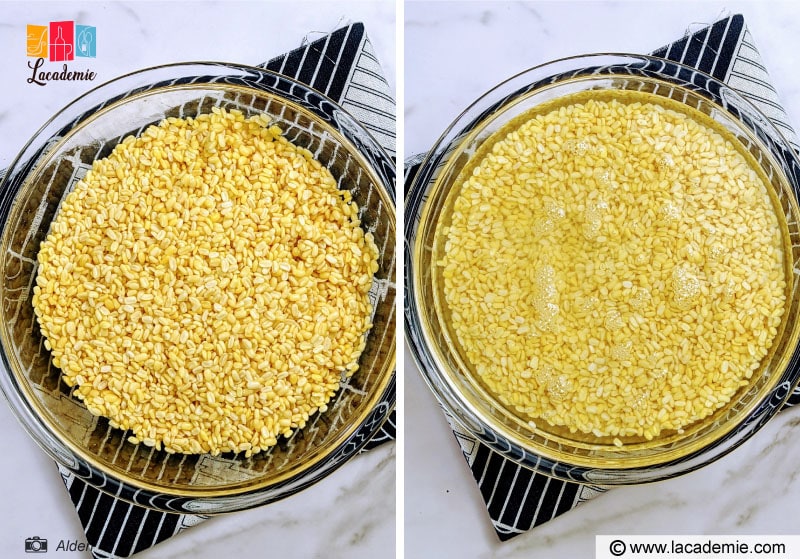
Step 4: Marinate The Meat
Crush the shallots using your mortar and pestle.
Cut the pork belly into pieces of equal length. Then, season them with 1 teaspoon of salt, 1 tablespoon of sugar, 1 tablespoon of pepper, and 2 tablespoons of shallots. Mix well.
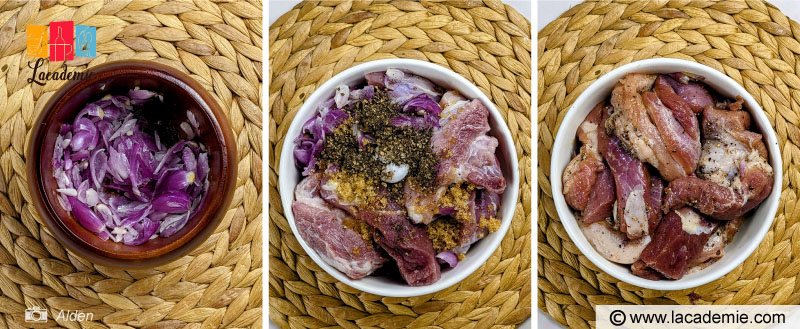
Step 5: Cook The Mung Beans
Cook the mung beans for 20 minutes to soften them. When the beans are tender, add 1 tablespoon of sugar and 1 teaspoon of salt. Mix until well combined and smooth.
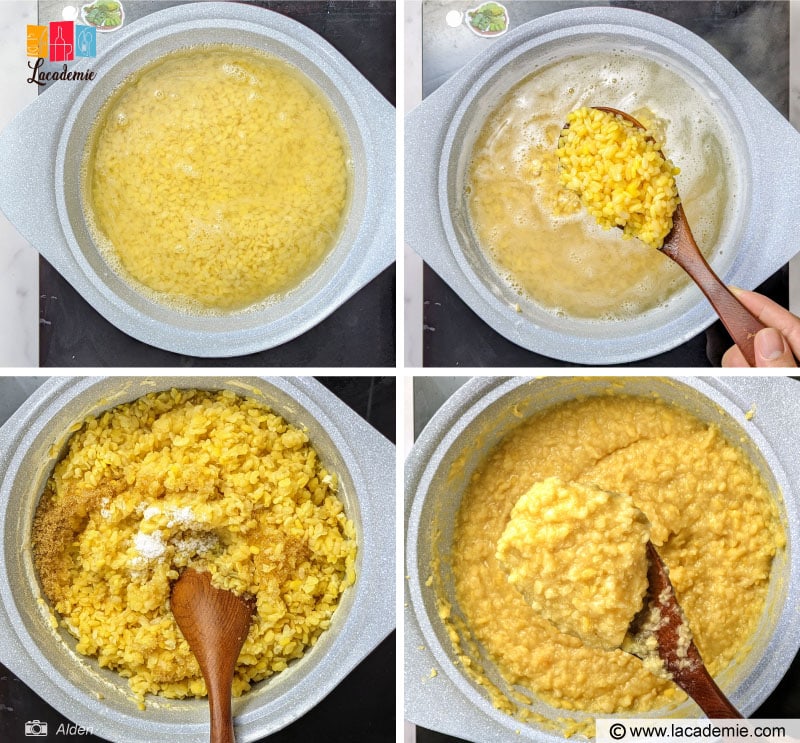
Step 6: Stir Fry The Sticky Rice
Once the rice has dried, put it in a large mixing bowl. Pour in the coconut milk and pandan leaf extract, then add 1 tablespoon of salt and 1 tablespoon of sugar. Mix well.
Put the sticky rice in a pan and stir-fry it over medium heat, stirring frequently. Once the rice has fully absorbed the spices, remove it from the heat and set aside.
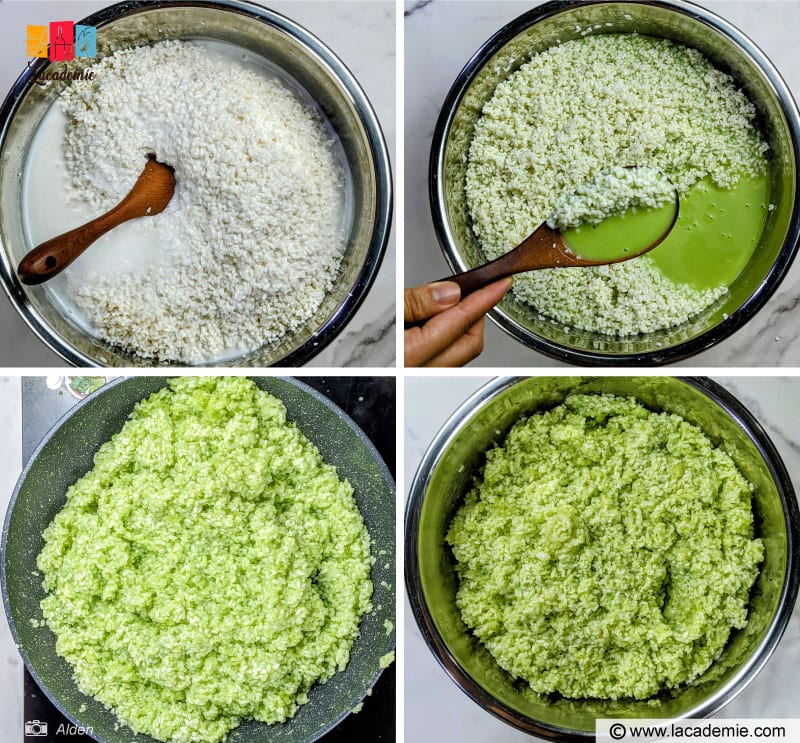
Step 7: Wrap The Cakes
Before wrapping, trim off the Dong leaves’ midribs along their length to make them softer. Make sure that the leaves are dry. If the leaves are too crispy, you can steam them a little to soften them.
There are two ways to wrap your Banh Chung: with or without a mold. Using a square mold will make the wrapping process easier, resulting in more evenly-shaped cakes. If you’re new to wrapping Banh Chung, I highly recommend using molds for the best result.
Wrap The Banh Chung Using Molds
First, arrange the leaves as shown in the photo below, and place the small mold on top of them. You should let the darker side of the leaves touch the sticky rice and the paler side face outward. Doing so will give the cake a more vivid color.
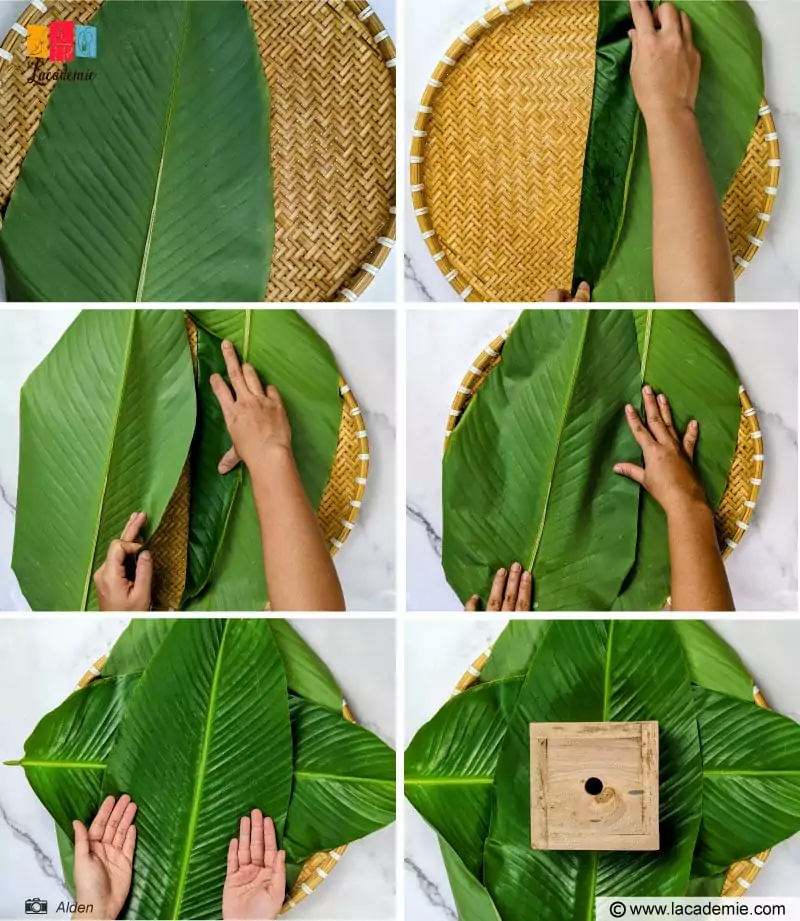
Fold the sides of the leaves together until they wrap around the mold neatly.
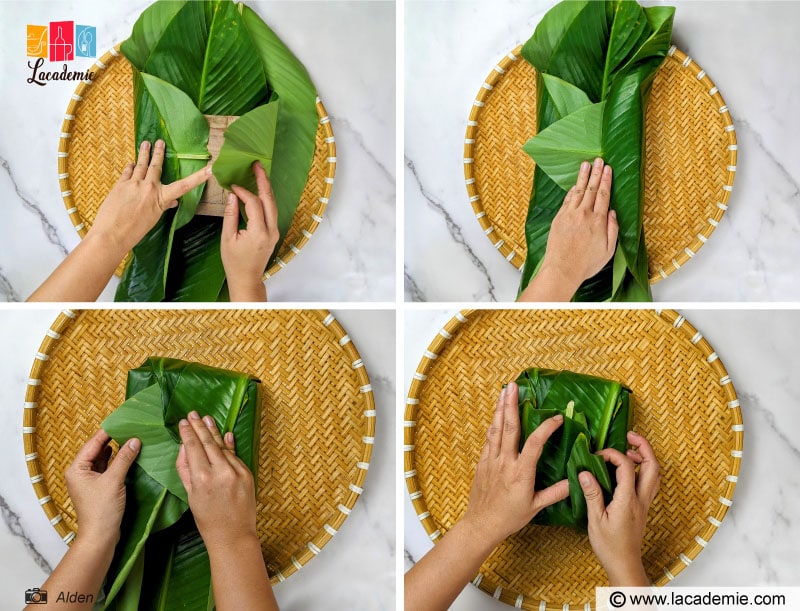
Flip the wrapped mold and place it inside the larger mold. Turn the molds over, then carefully take the smaller mold out. After that, use your hands to press the corners so that the leaves fit nicely into the large mold.
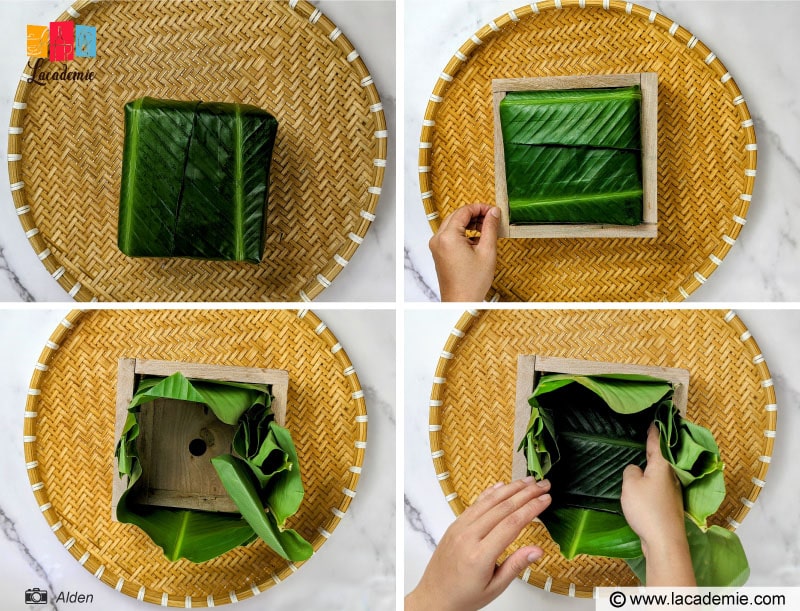
Spoon the sticky rice into the mold. Press and spread the rice evenly to fill the bottom of the mold.
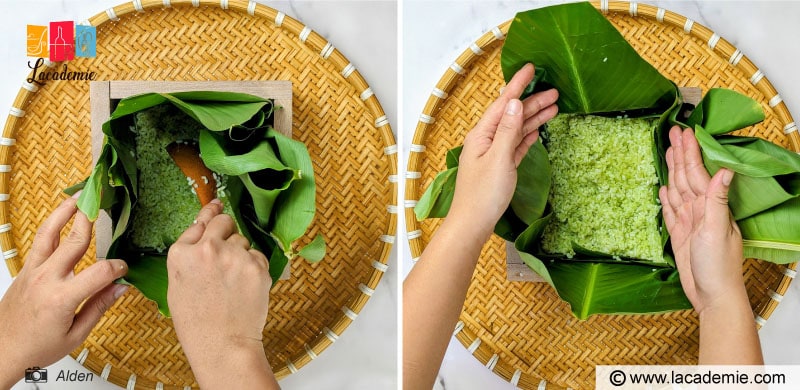
Spread the mung beans over the rice. You can use either a large spoon or a flat spatula for this step. Personally, I find the flat spatula to be a better choice.
Place a piece of pork belly on top of the mung beans.
Cover the surface of the meat with another layer of mung beans. You should leave about 0.5 inches of space between the mung beans and the edges of the mold.
Spread a layer of sticky rice over the mung beans. Gently press the rice at the corners and on the surface. For the best result, you should try to use an equal amount of rice for the first and last layers.
Place 2 small Dong leaf pieces over the cake to secure its shape.
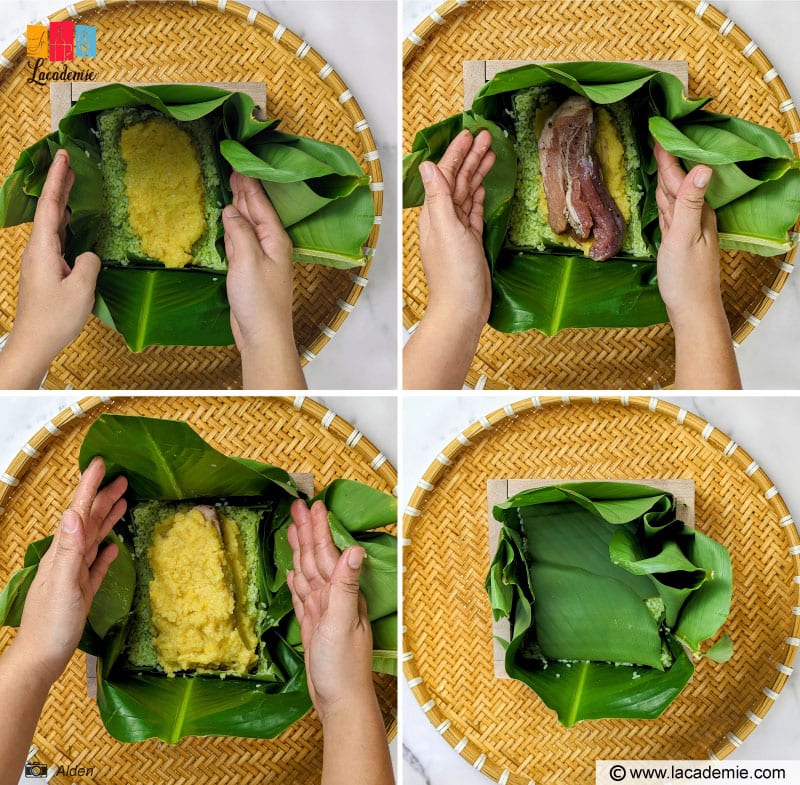
Fold the leaves inward. You can trim off the excess leaves.
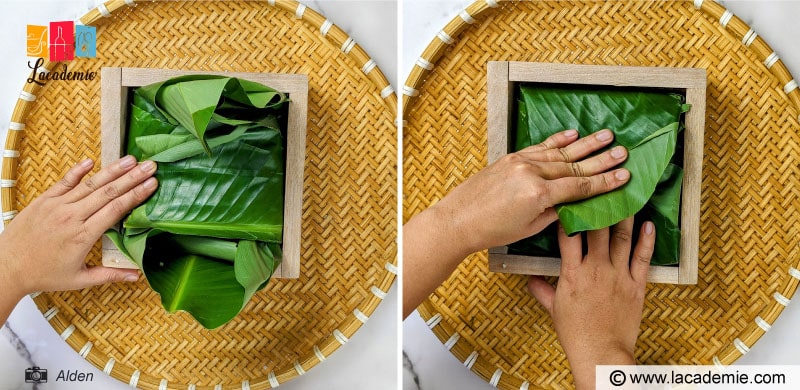
Secure the wrapping with your left hand and carefully pull the mold out in an upward motion using your right hand (see the photo or video below for a clearer illustration).
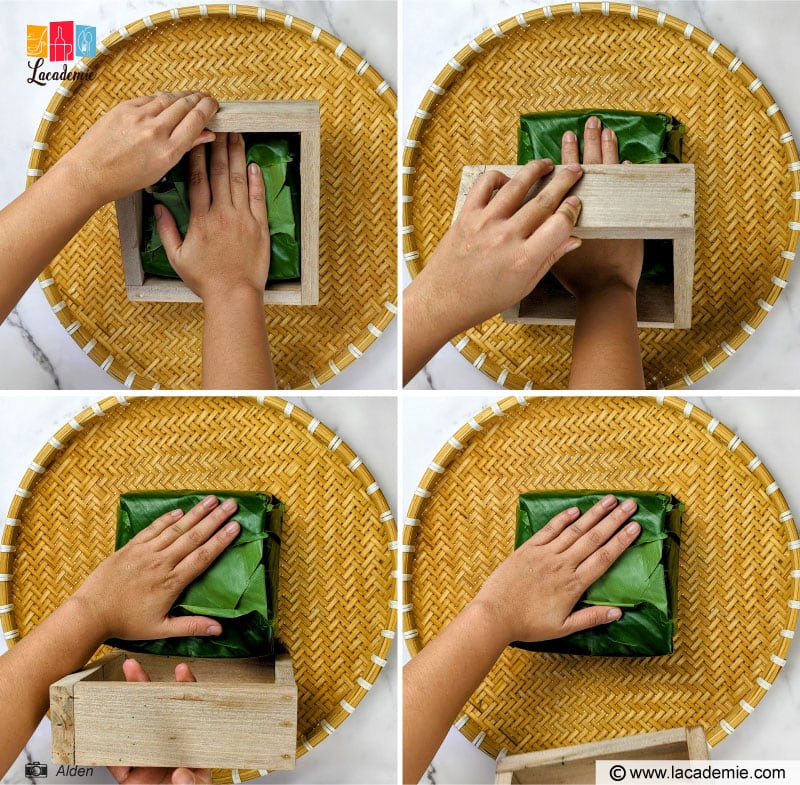
Tie the bamboo strings or kitchen twines around the cake to secure the leaves, cutting off any excess strings. You shouldn’t tie the cake too tightly as it will expand during steaming.
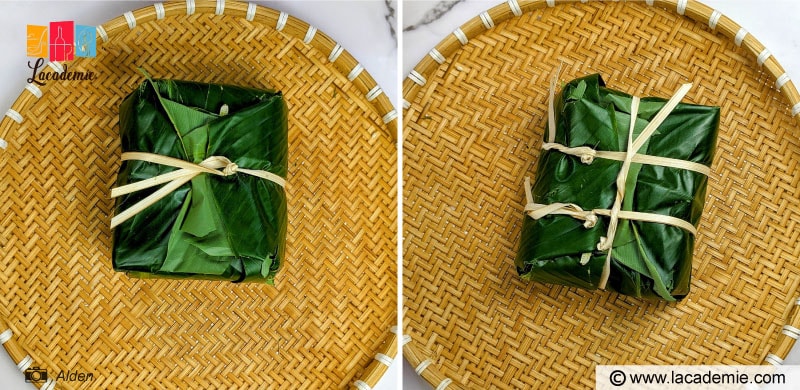
Wrap The Banh Chung Without A Mold
First, prepare 4 equally sized Dong leaves. You’ll use them to create a “mold”.
Arrange the Dong leaves so that their paler sides face up.
Fold the leaves in half lengthwise, then fold them horizontally. Use your hand to press the fold in place.
Remove some length off the leaves, depending on how big or small you want your cake to be.
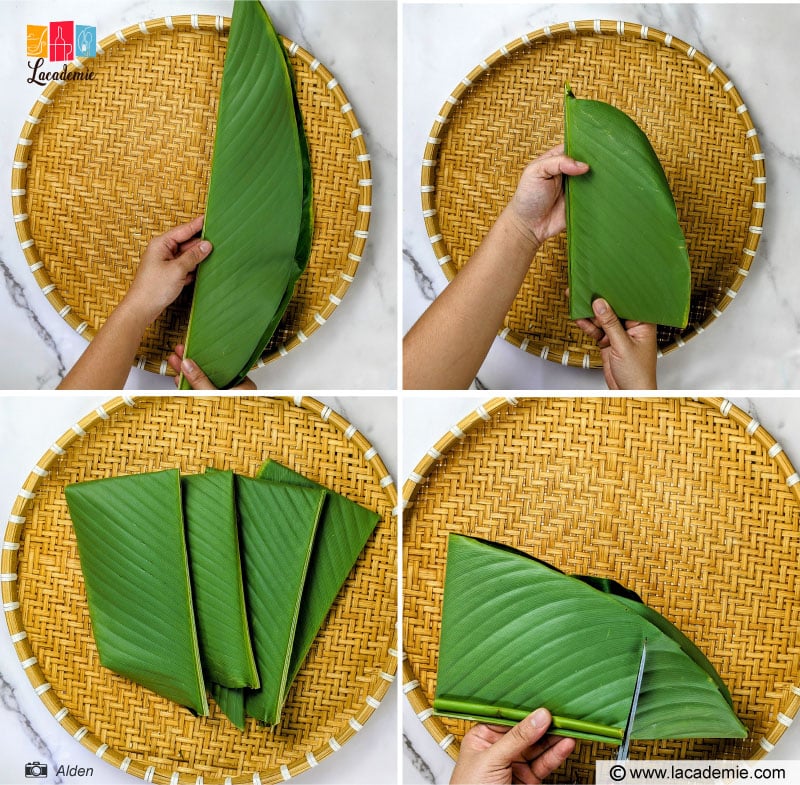
Unfold the leaves and fold them diagonally so that the two edges are at a 90 degrees angle to each other. You can place a heavy object on top of the leaves to secure the fold more firmly.
Put 4 leaves together to create a “mold”. Since this step is a little complicated, I highly suggest you watch the instruction video.
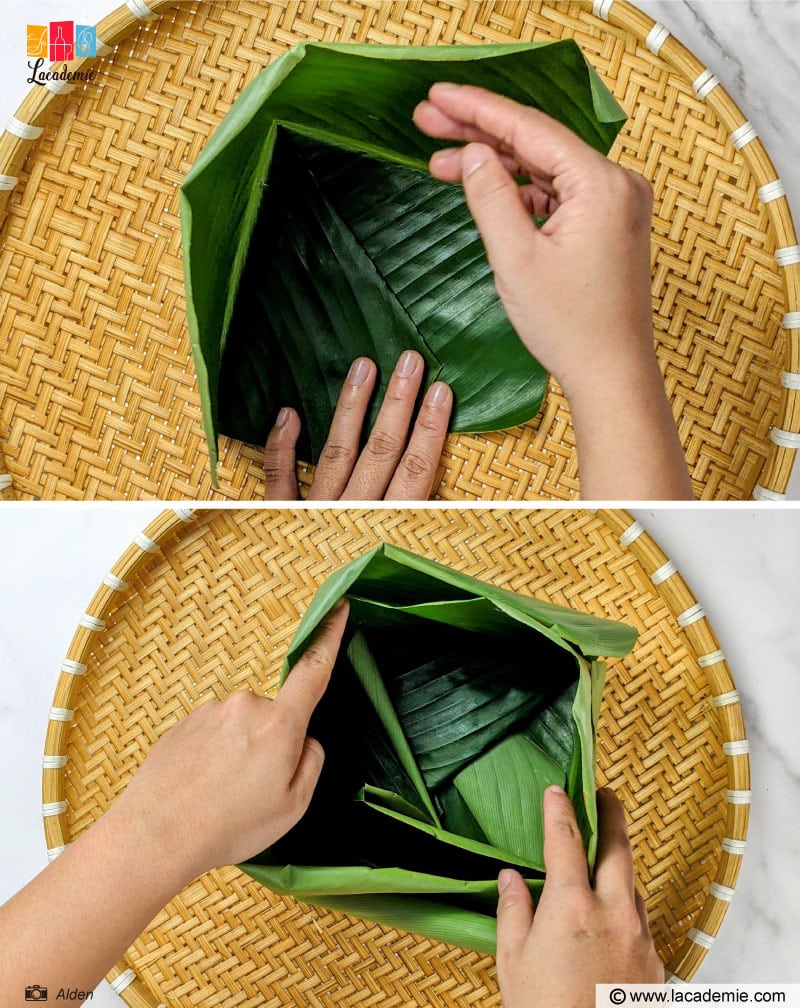
Adjust the leaves as best as you can to form a square shape. Then, put the ingredients in as per instructed above.
Fold the edges of the leaves inward and secure them with bamboo strings or kitchen twines.
Gently squeeze the corners of the cake to spread the filling more evenly and create a better shape.
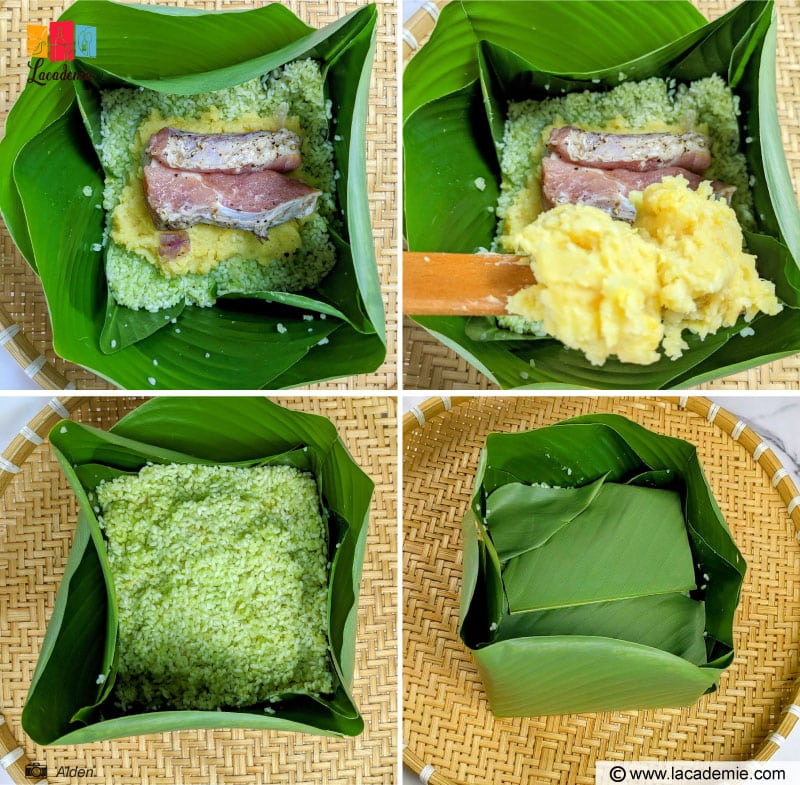
As you can see, wrapping Banh Chung without a mold requires more skills. Here are the differences between using and not using a mold.
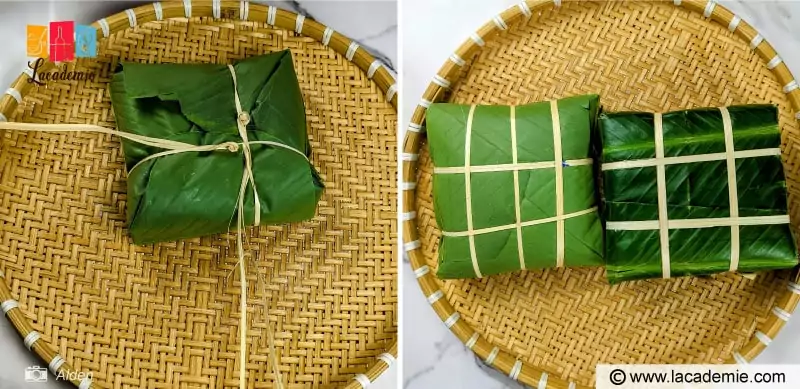
Step 8: Boil The Cakes
Line a boiling pot with the remaining Dong leaves. Doing this will prevent the Banh Chung from burning at the bottom and give the boiling water a nice green color.
Put the cakes in the pot vertically. Then, pour in enough water to cover the surface of the cakes and boil them continuously for 8 hours.
Banh Chung in smaller sizes will require less boiling time. You can also cook them using a pressure cooker to save time.
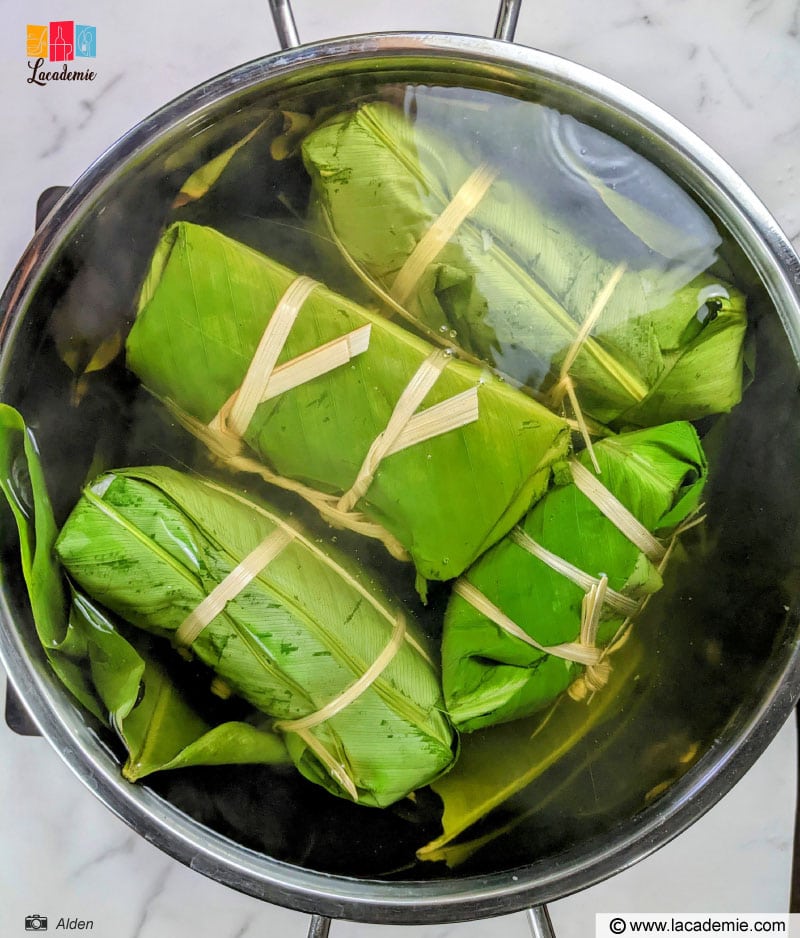
Prepare an additional pot of boiling water and gradually add more water when the cakes are boiling.
At the 4-hour mark, turn the cake over and change the water. Otherwise, your Banh Chung will not cook evenly.
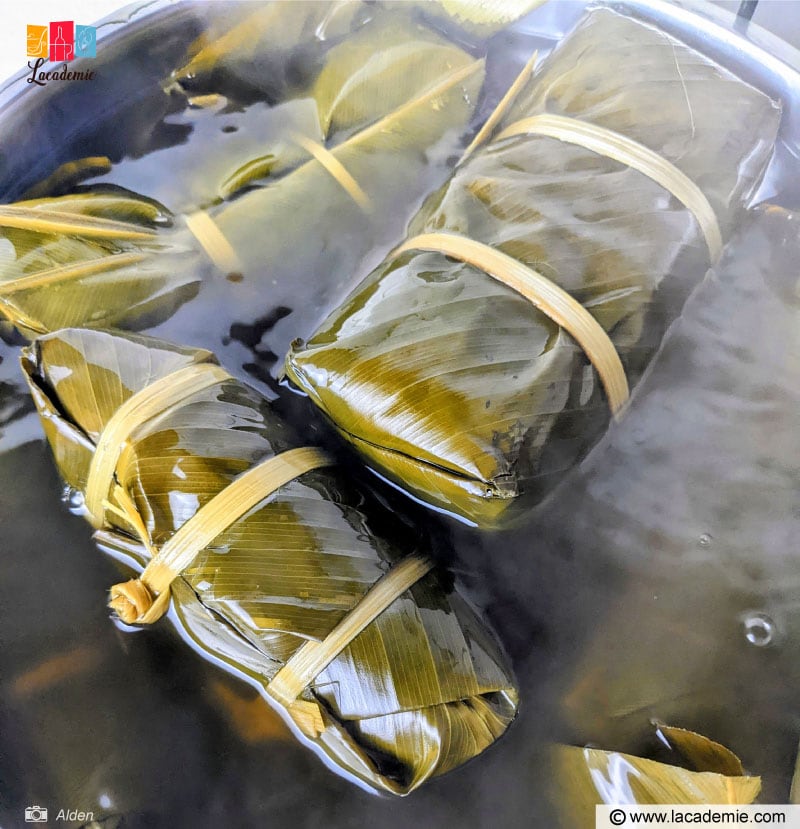
Step 9: Remove The Cakes From The Pot
Once the cakes are fully cooked, use your tongs to take them out of the pot.
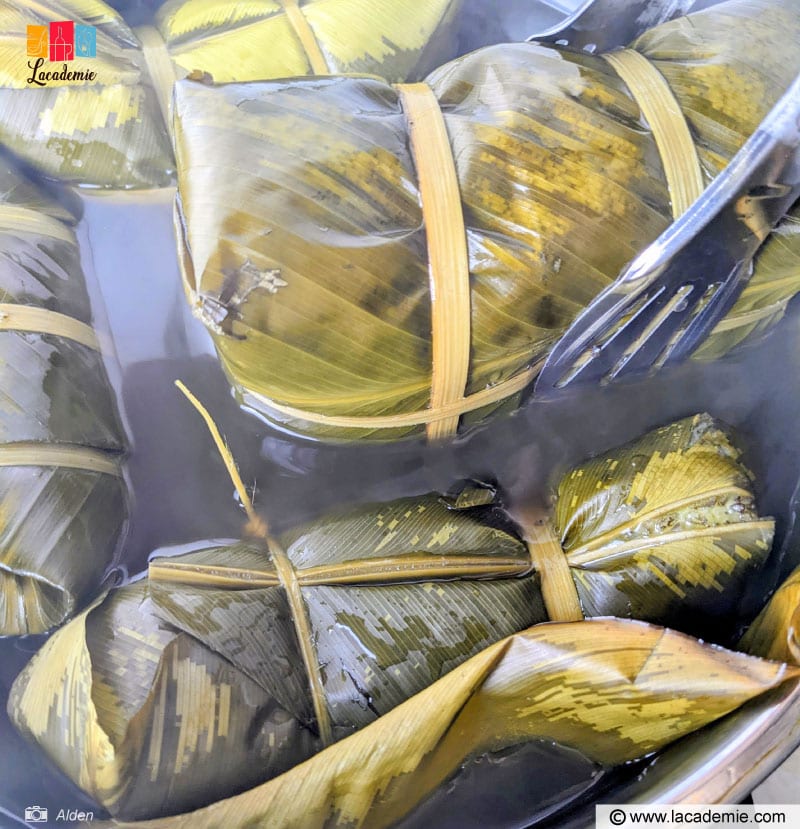
Rinse the cakes in cold water to get rid of the sap. Drain the Banh Chung and stack them on top of each other. Use a heavy object to press down on them. This step will help the cakes release excess liquid and have a flatter, more even shape. Plus, the texture will be firmer, and your cakes will last for longer.
Hang the sticky rice cakes up or store them in a dry place.
Step 10: Unwrap And Cut The Cakes
Partially unwrap the cake, and save the strings or twines.
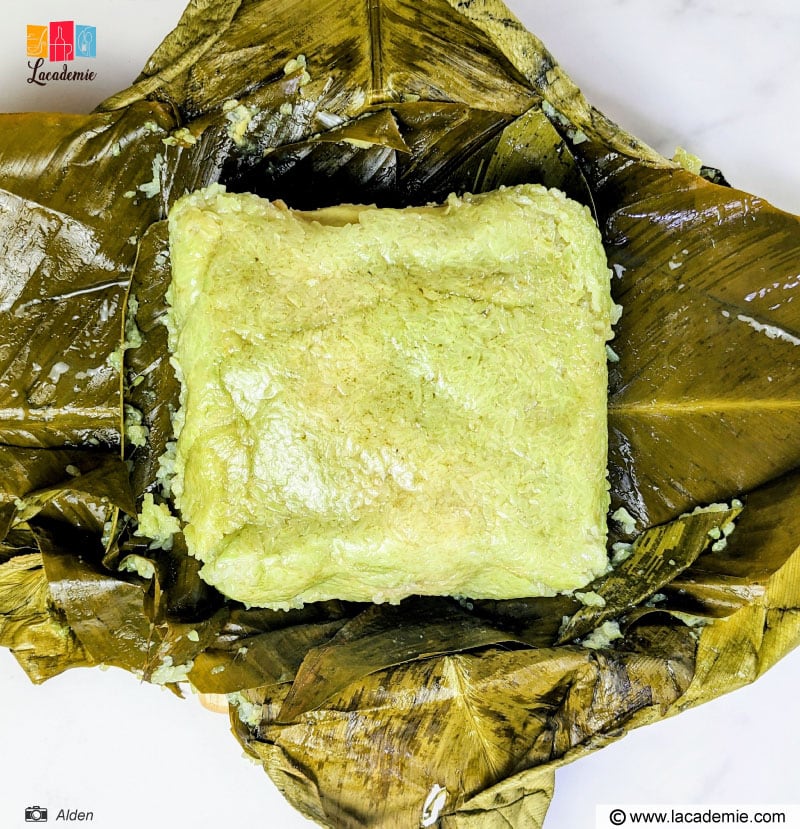
If you use bamboo strings, separate them so that they have a moderate thickness. You’ll need 4 strings to cut a cake.
Arrange the strings on top of the cake as shown in the photo below. Then, place a plate on top of the cake.
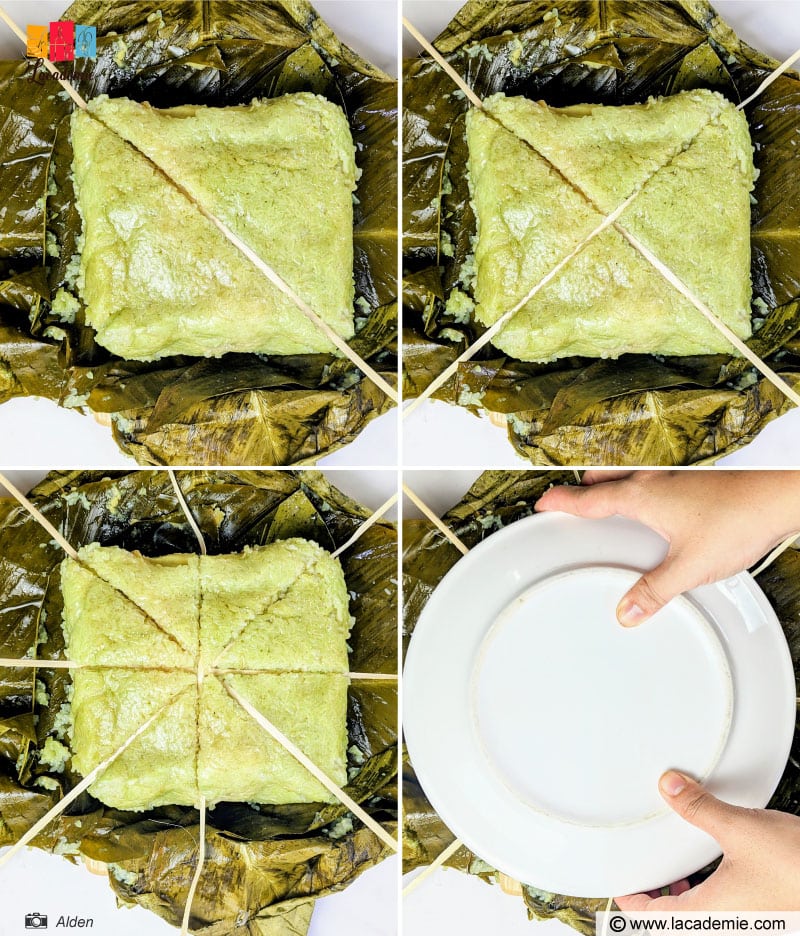
Turn the whole cake with the plate upside down and remove the remaining leaves.
Hold both ends of the first string and pull them together diagonally. Doing so should give you a perfect cut. Repeat this step for the rest of the strings, following the order that you arrange them on the Banh Chung.
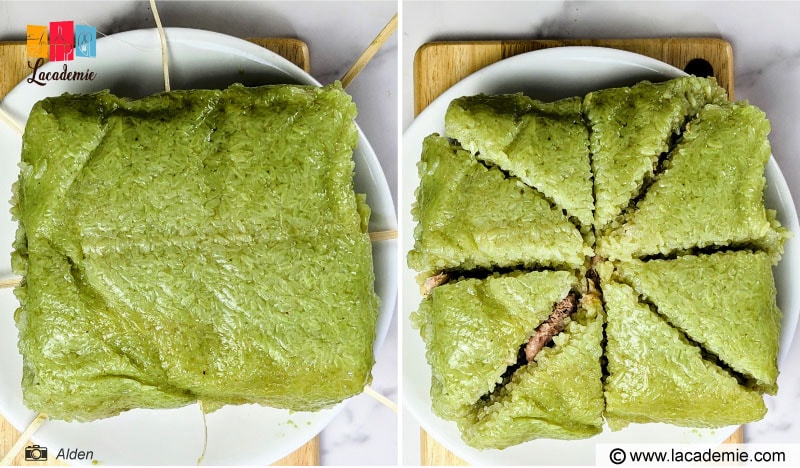
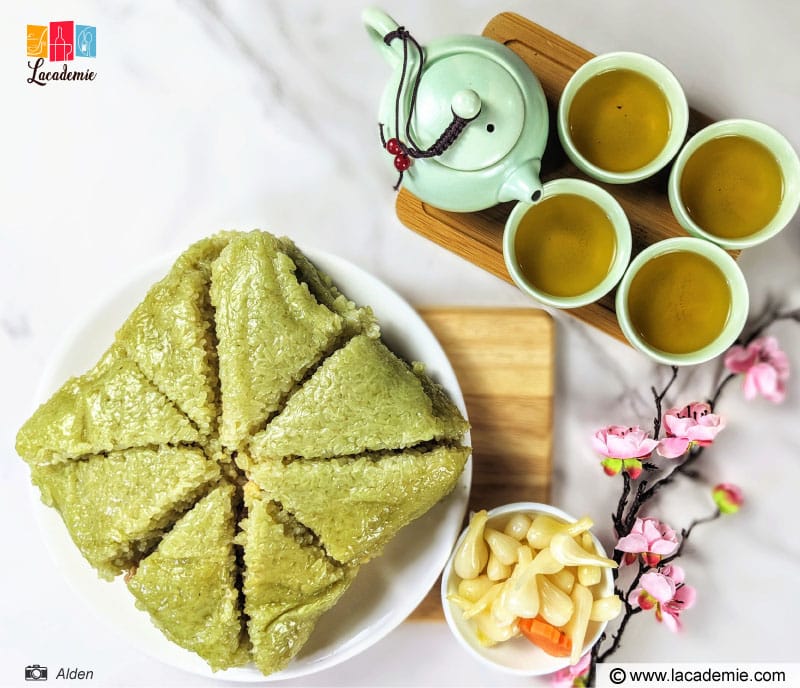
These Tips Will Help You Make The Best Banh Chung
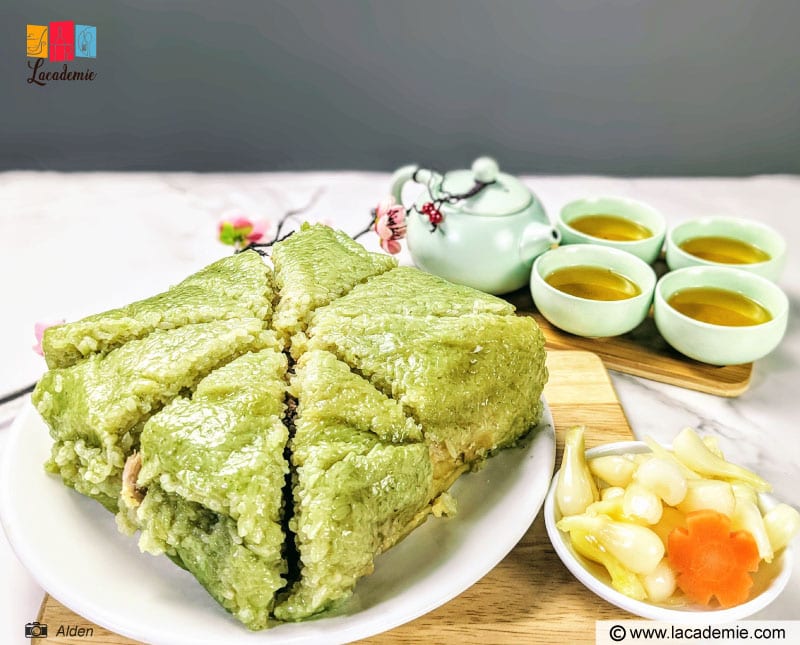
While making Banh Chung is not super complicated, the process might still be a bit challenging for first-timers. Worry not! These tips will give you an easier cooking time.
- While fish sauce is a common ingredient in many traditional Vietnamese dishes, you should not add this condiment to the filling of Banh Chung. The sauce will make the pork more prone to spoilage.
- You shouldn’t boil the cakes for less than 8 hours as they will still be raw and hard. On the other hand, boiling them for too long will lead to mushy cakes.
- Choose thick Dong leaves with a moderate width. The leaves shouldn’t be too mature or too young. The young leaves are often small, thin, and have a pale color, while old leaves are too big and need to be trimmed to the ideal size for wrapping.
- Ideally, the leaves should be equally sized and have a bright, slightly glossy appearance. You should also pick the leaves that aren’t torn and have small stalks.
- Don’t forget to wash the leaves and wipe them dry before wrapping. If you have time, I strongly suggest blanching the leaves, which helps them retain their color during cooking.
- Banana leaves are a great alternative to Dong leaves. In fact, you might find wrapping the cakes with banana leaves easier. However, the cakes won’t be as vivid-looking and aromatic.
The Best Dishes To Serve With Banh Chung
To enjoy your tasty Banh Chung to the fullest, serve it with pickled scallion heads (“củ kiệu”), dry shrimp, or vegetable pickles (“dưa món”). The delightfully sweet and sour pickled veggies pair perfectly with the rich and fragrant sticky rice.
If you’re a fan of fried food, try frying the Banh Chung. Note that you shouldn’t add too much oil and use a non-stick pan to fry the cakes over medium heat.
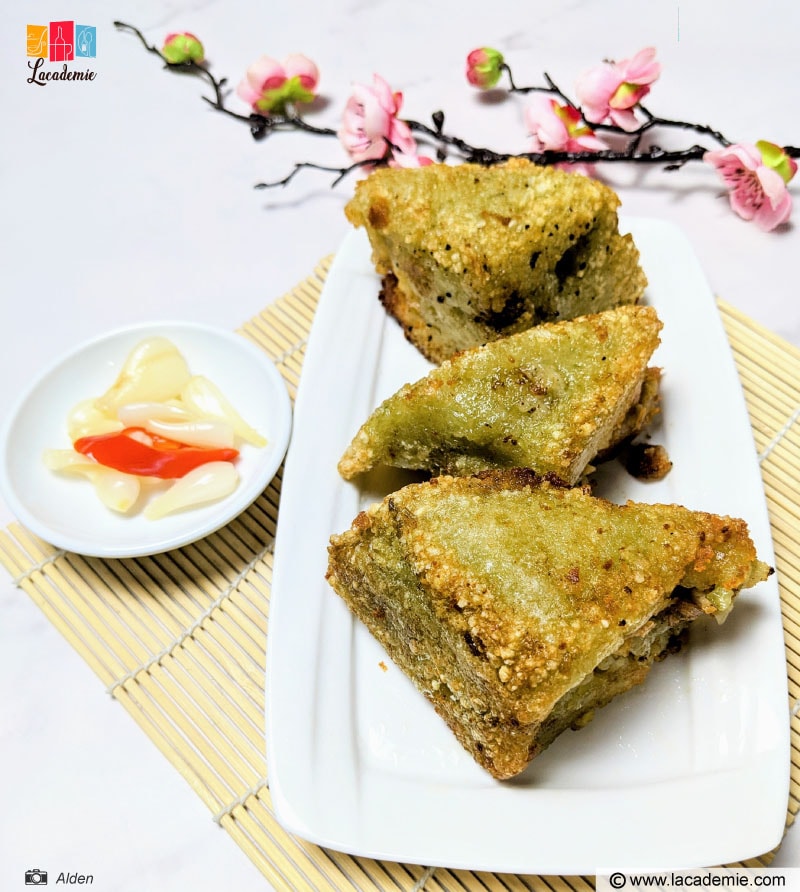
Enjoy the fried Banh Chung while they’re hot and crispy. I love pairing them with pork bologna, Chinese sausage, and pickles. You can also add a little chili sauce to spice things up. On cold days, I highly recommend enjoying Banh Chung with a cup of hot tea.
Banh Chung will last for about 1 week when stored in a refrigerator and for up to 3 months frozen. Simply pop the refrigerated cakes in a microwave for a few minutes to bring them back to life. To reheat a whole frozen cake, boil it for about 2 hours with the wrapping intact.
Enjoy Great Food And Explore Vietnamese Culture!
Banh Chung is a must-try dish if you’re curious about the cuisine and culture of Vietnam. Through this delicacy, you’ll have a better understanding of the traditions of this beautiful South East Asian country. More importantly, these sticky rice cakes are always delightful to enjoy.
How did your Vietnamese square sticky rice cake turn out? Did you and your family have a great time with this delicious recipe? Please let me know in the comment, and if the answer is yes, don’t hesitate to like and share this recipe with others around you.
Nutrition Facts
8 servings per container
- Amount Per ServingCalories1234
- % Daily Value *
- Total Fat
47.6g
73%
- Saturated Fat 28.6g 140%
- Sodium 897mg 38%
- Potassium 1429mg 41%
- Total Carbohydrate
133g
45%
- Dietary Fiber 20.4g 80%
- Sugars 12.2g
- Protein 65.4g 130%
- Calcium 147%
- Iron 8%
* The % Daily Value tells you how much a nutrient in a serving of food contributes to a daily diet. 2,000 calories a day is used for general nutrition advice.

